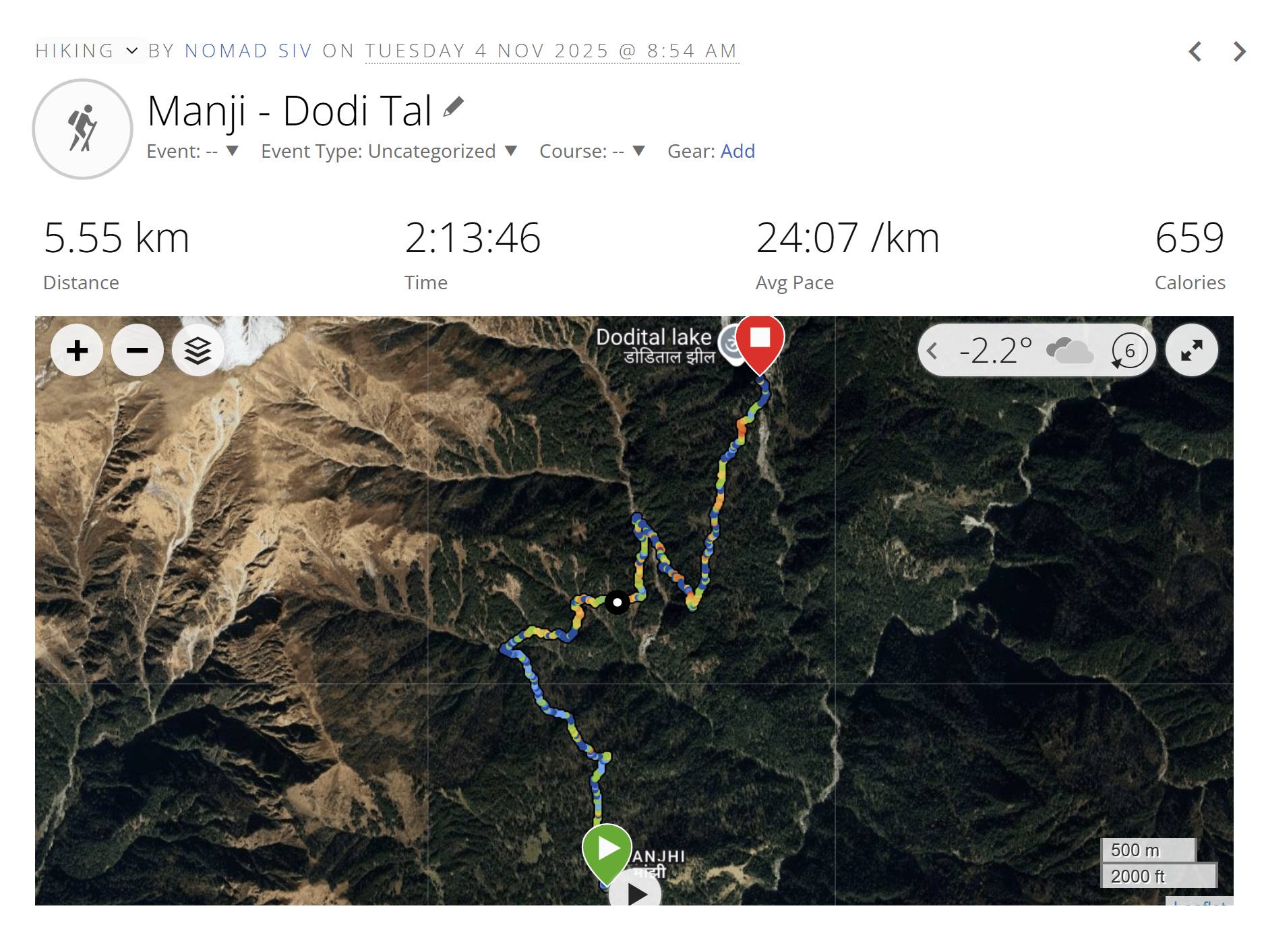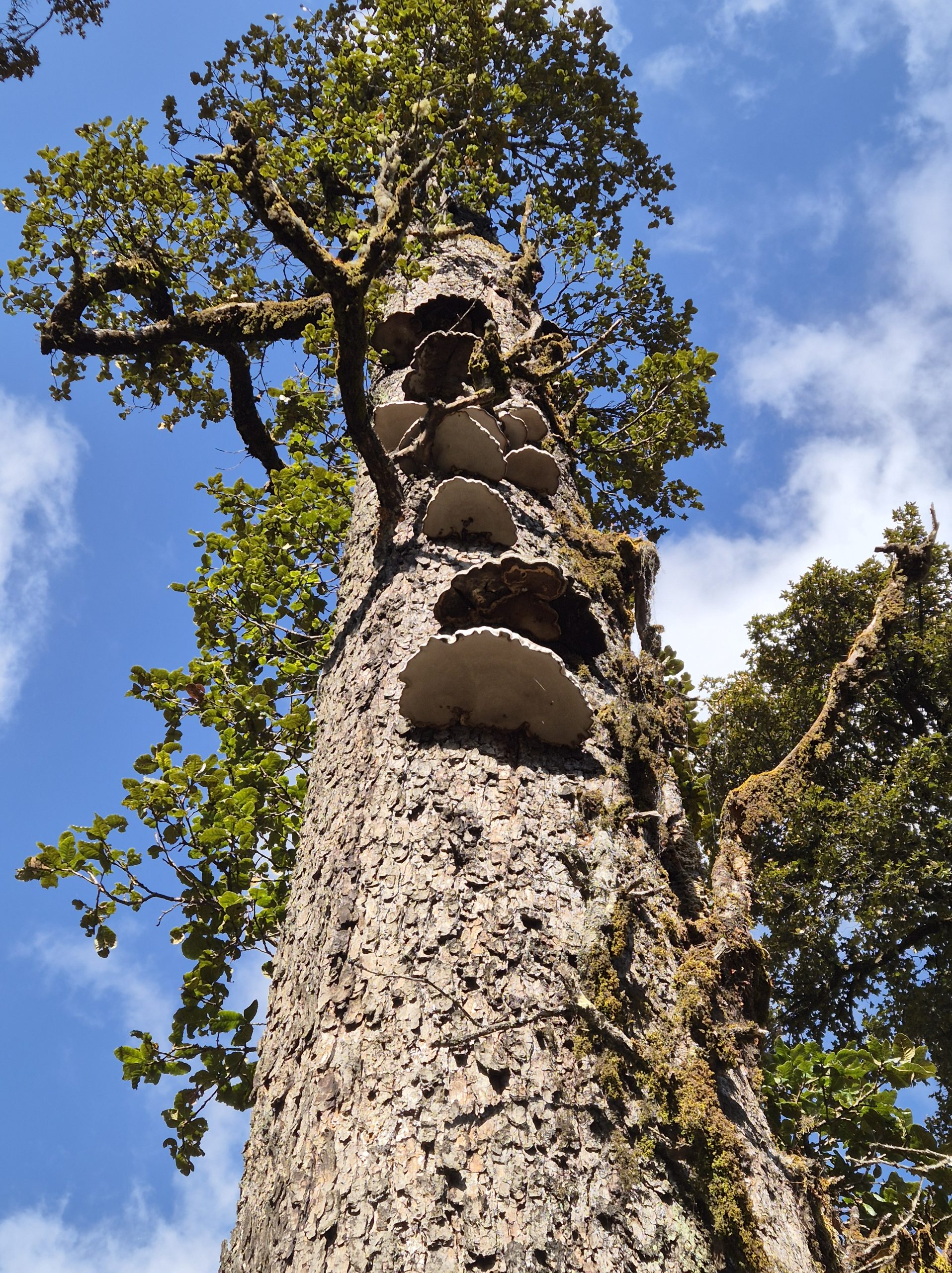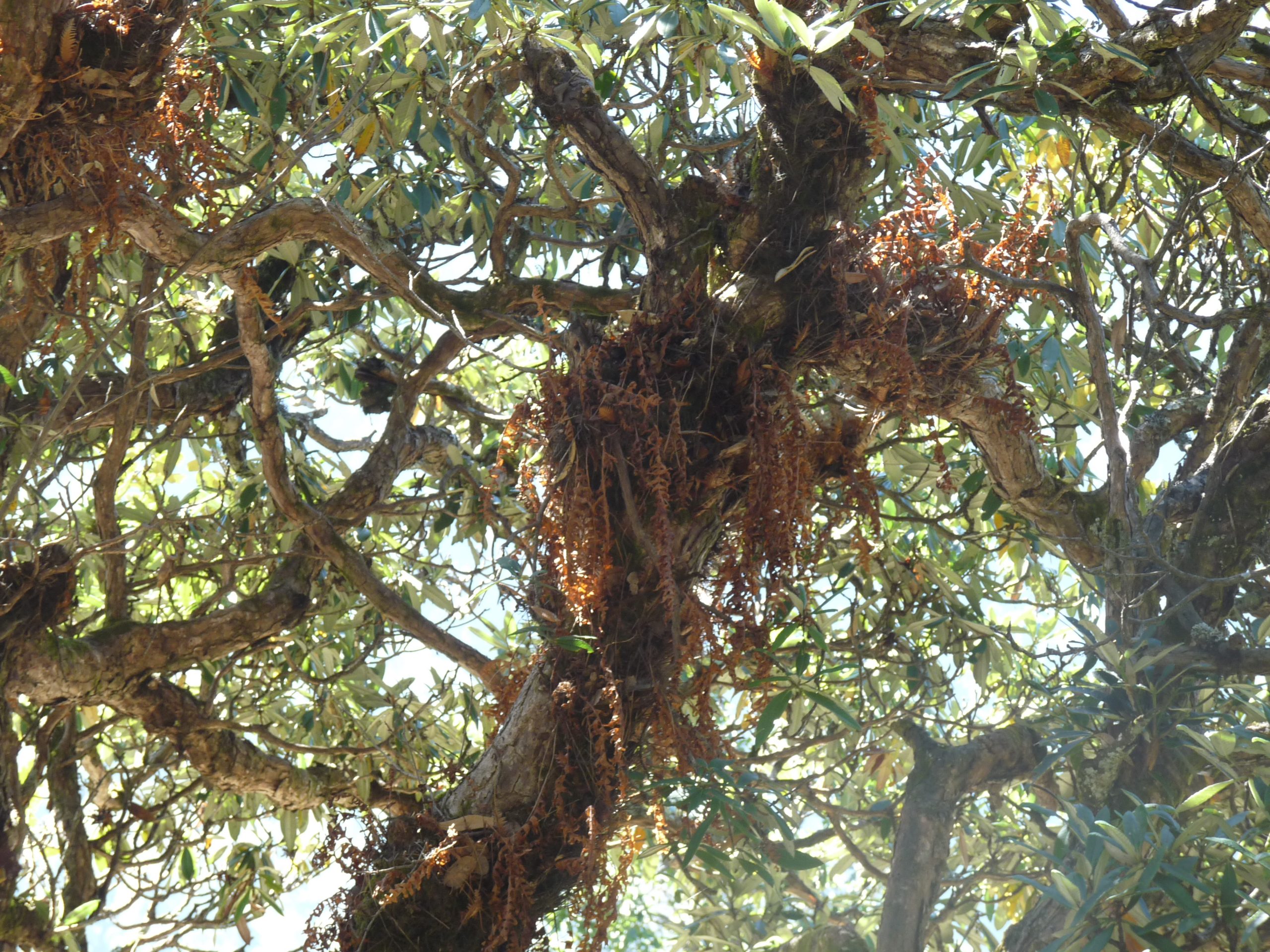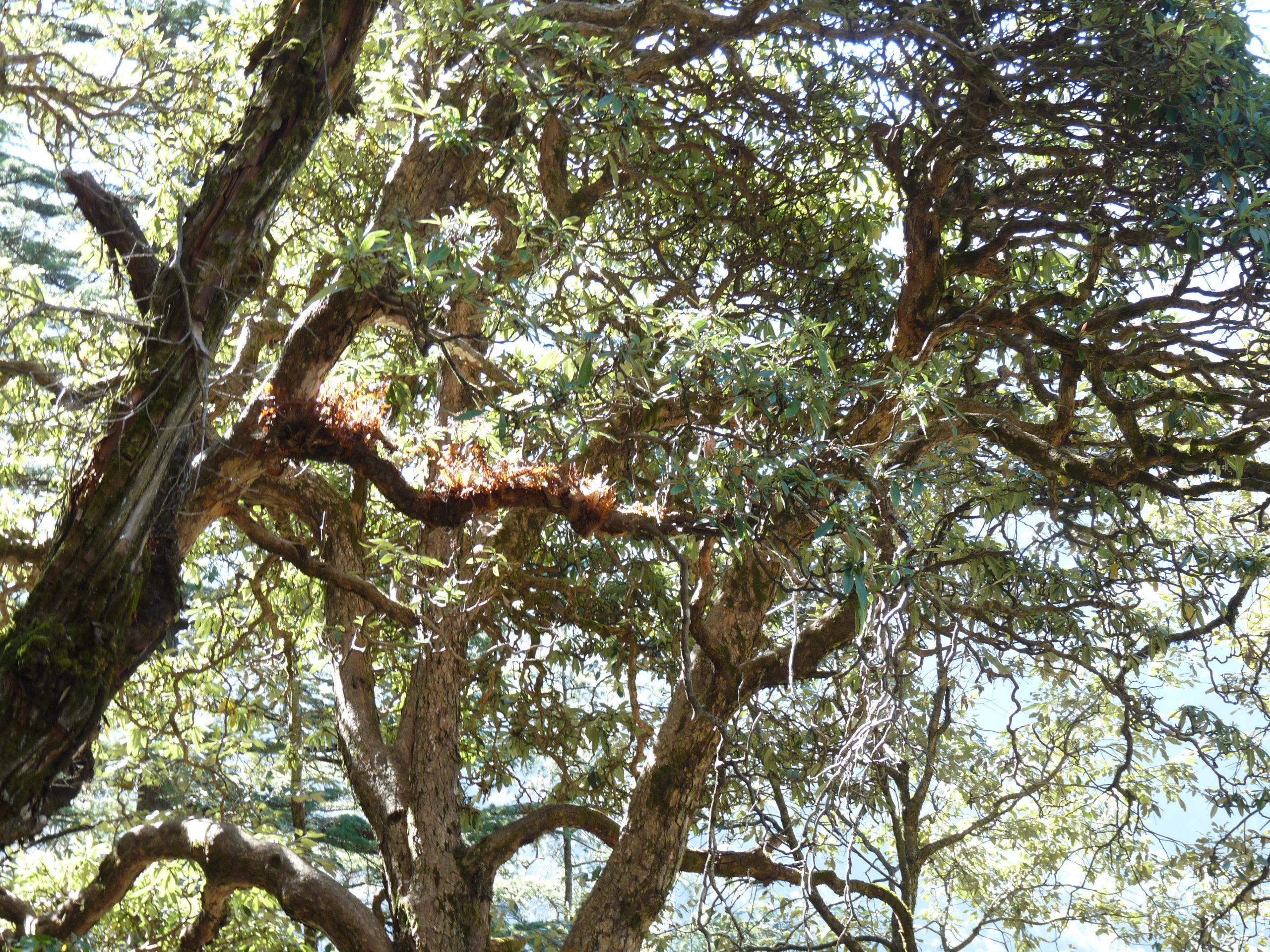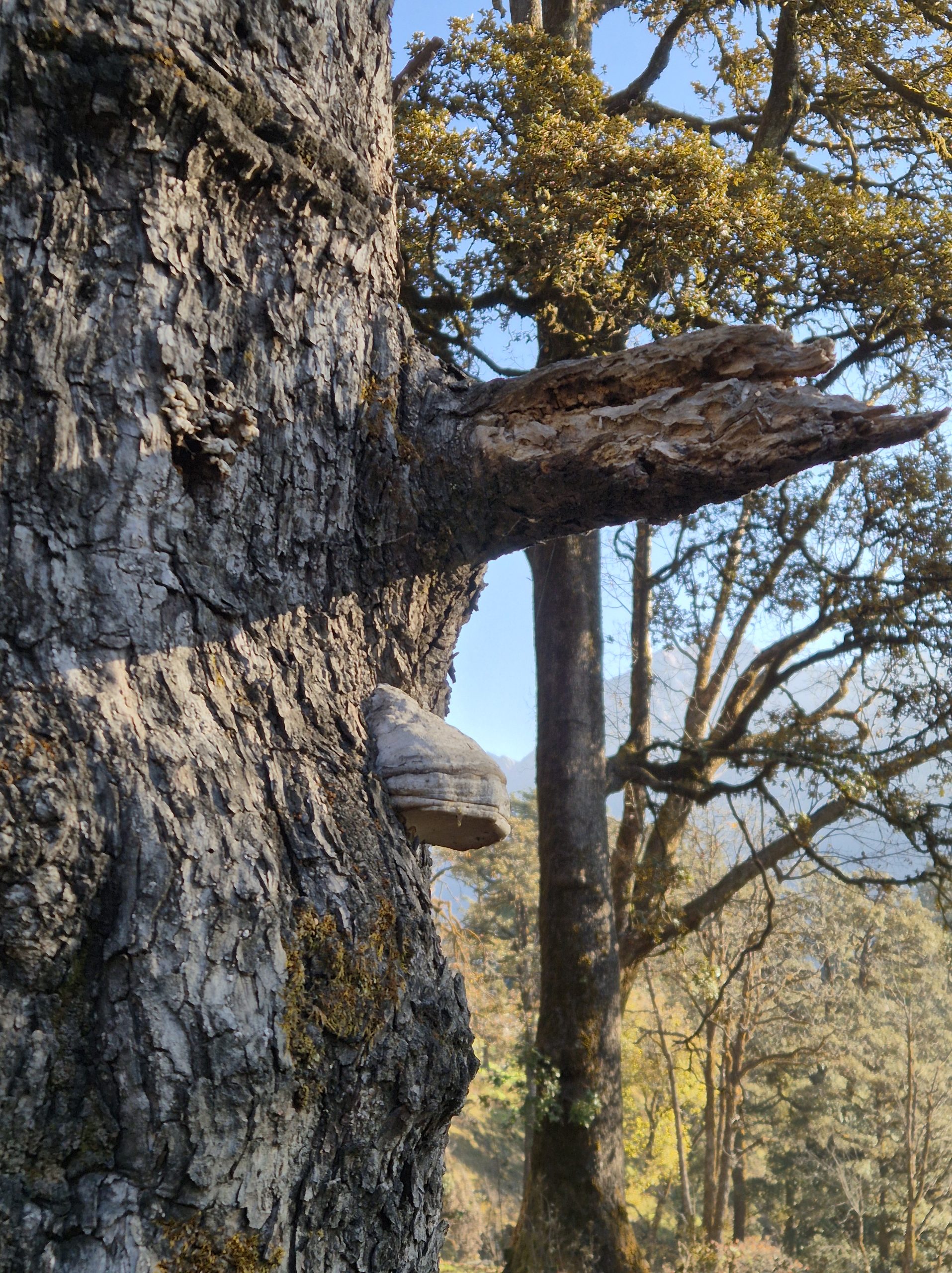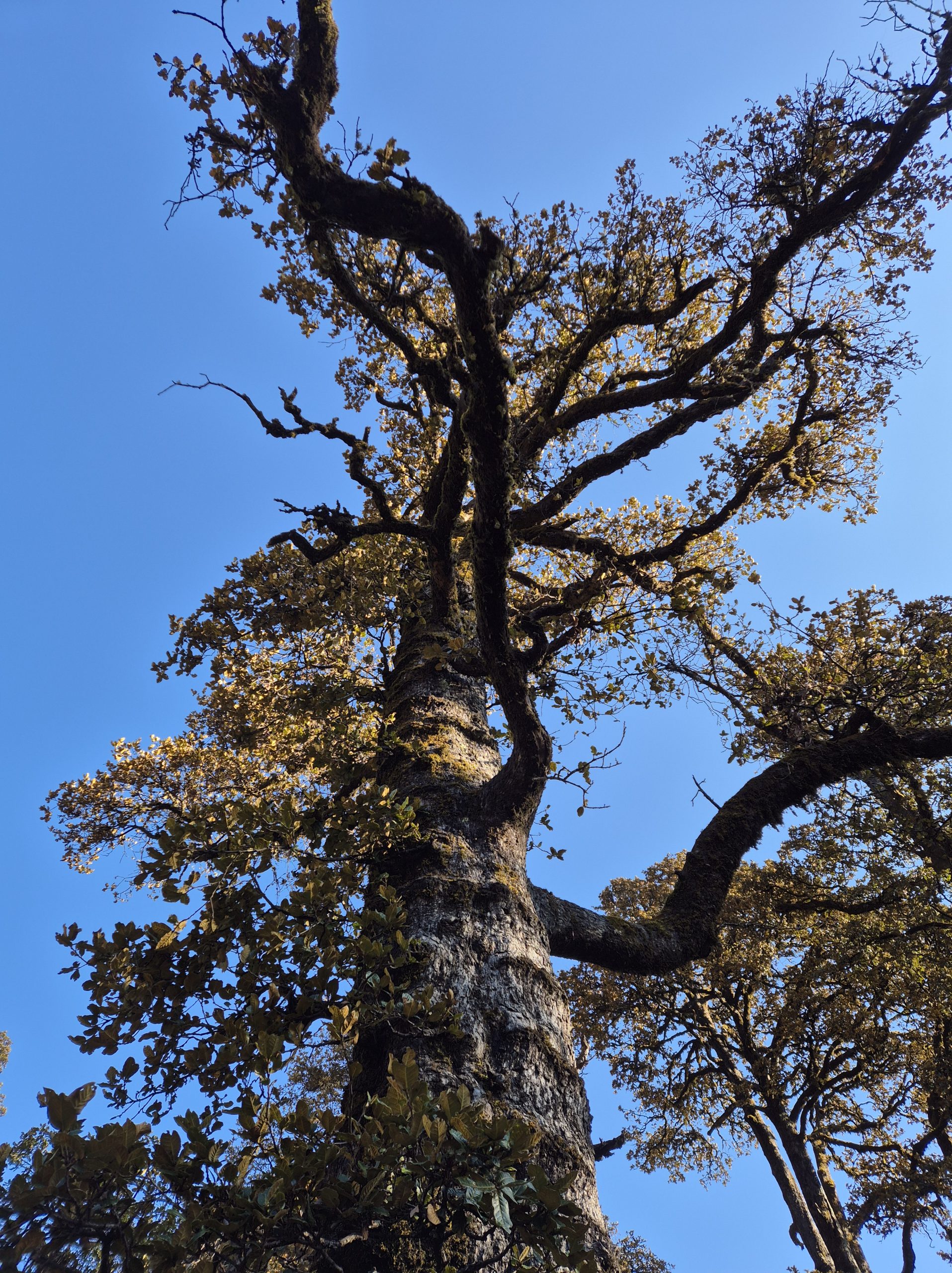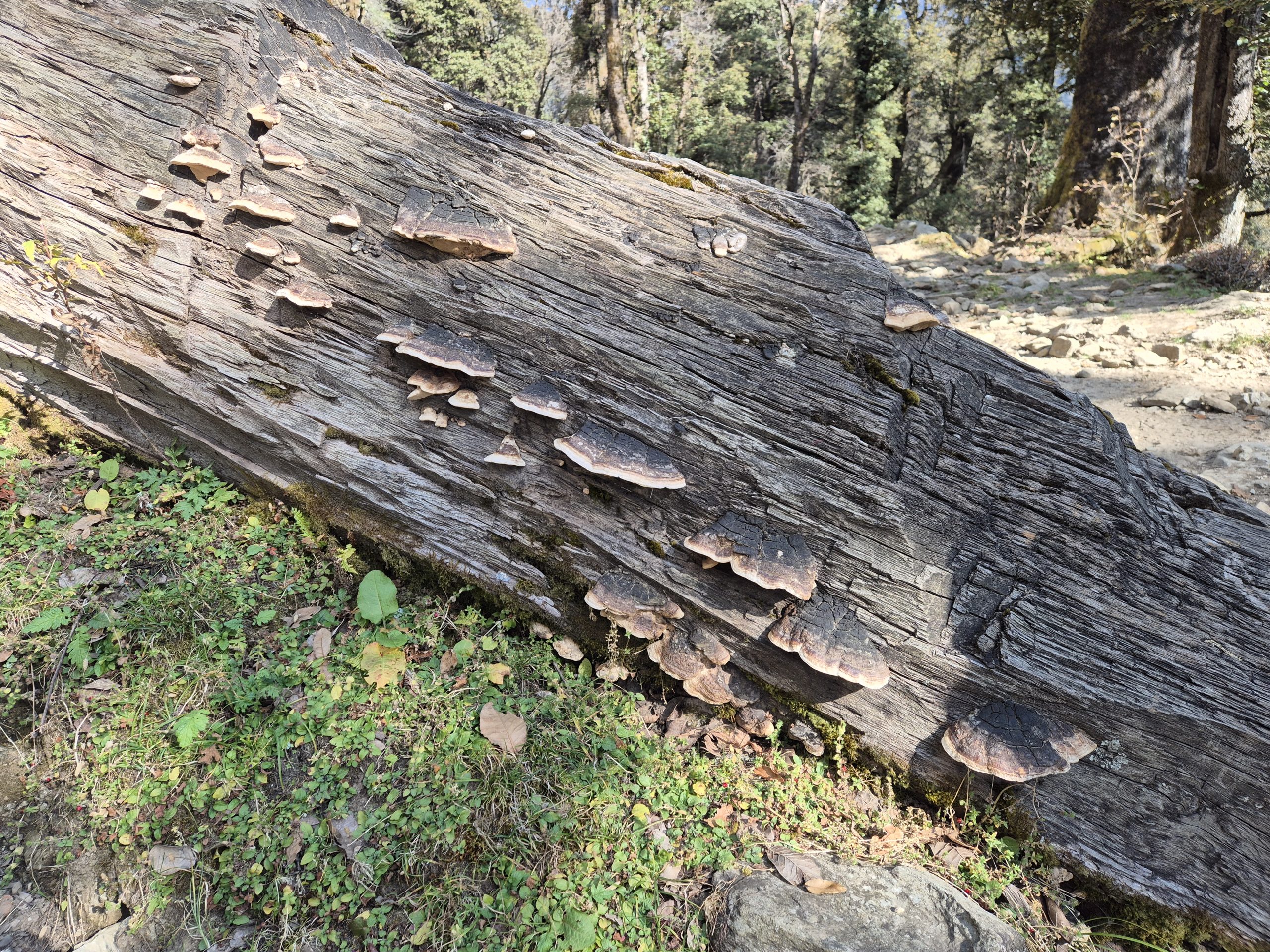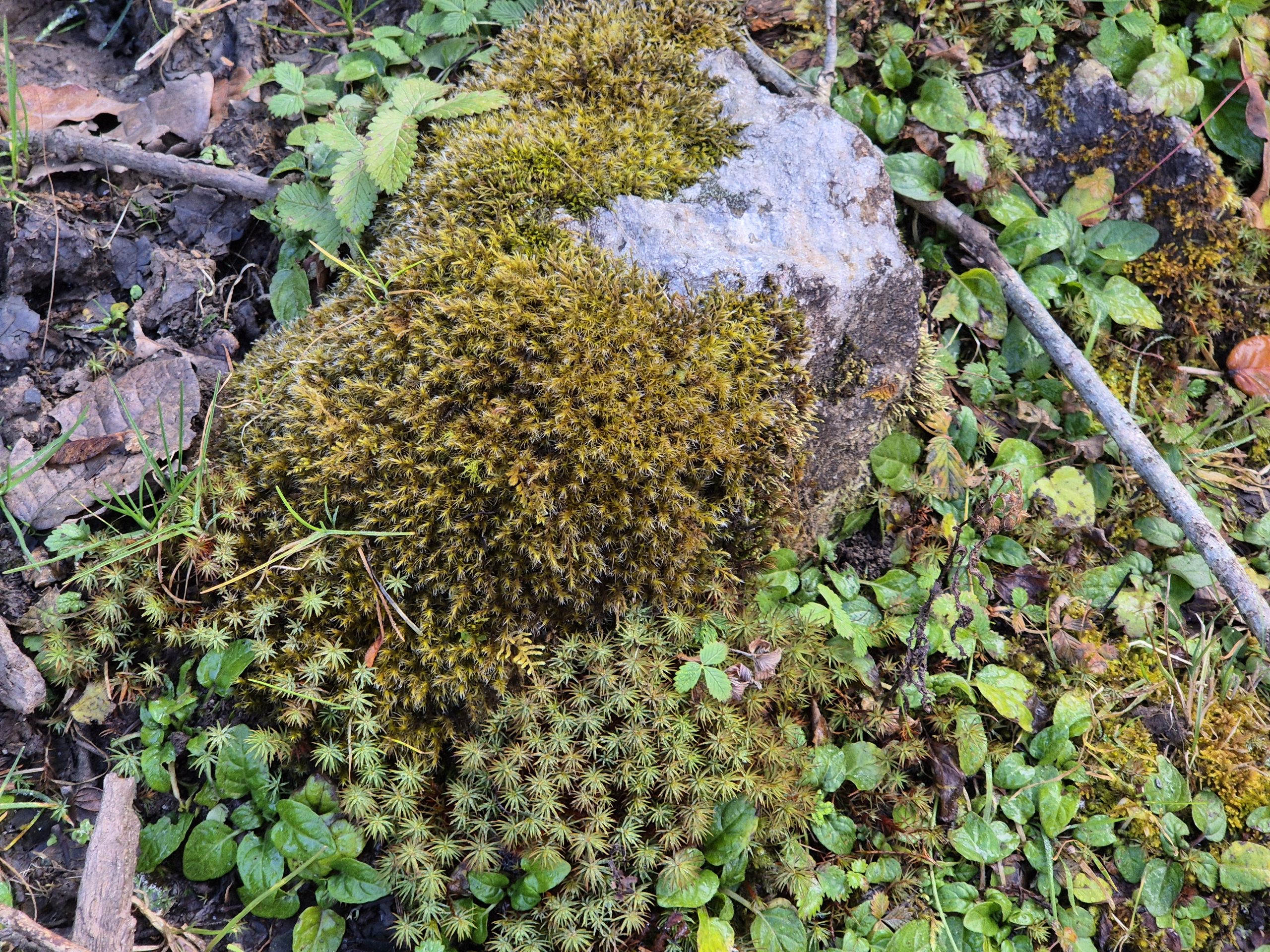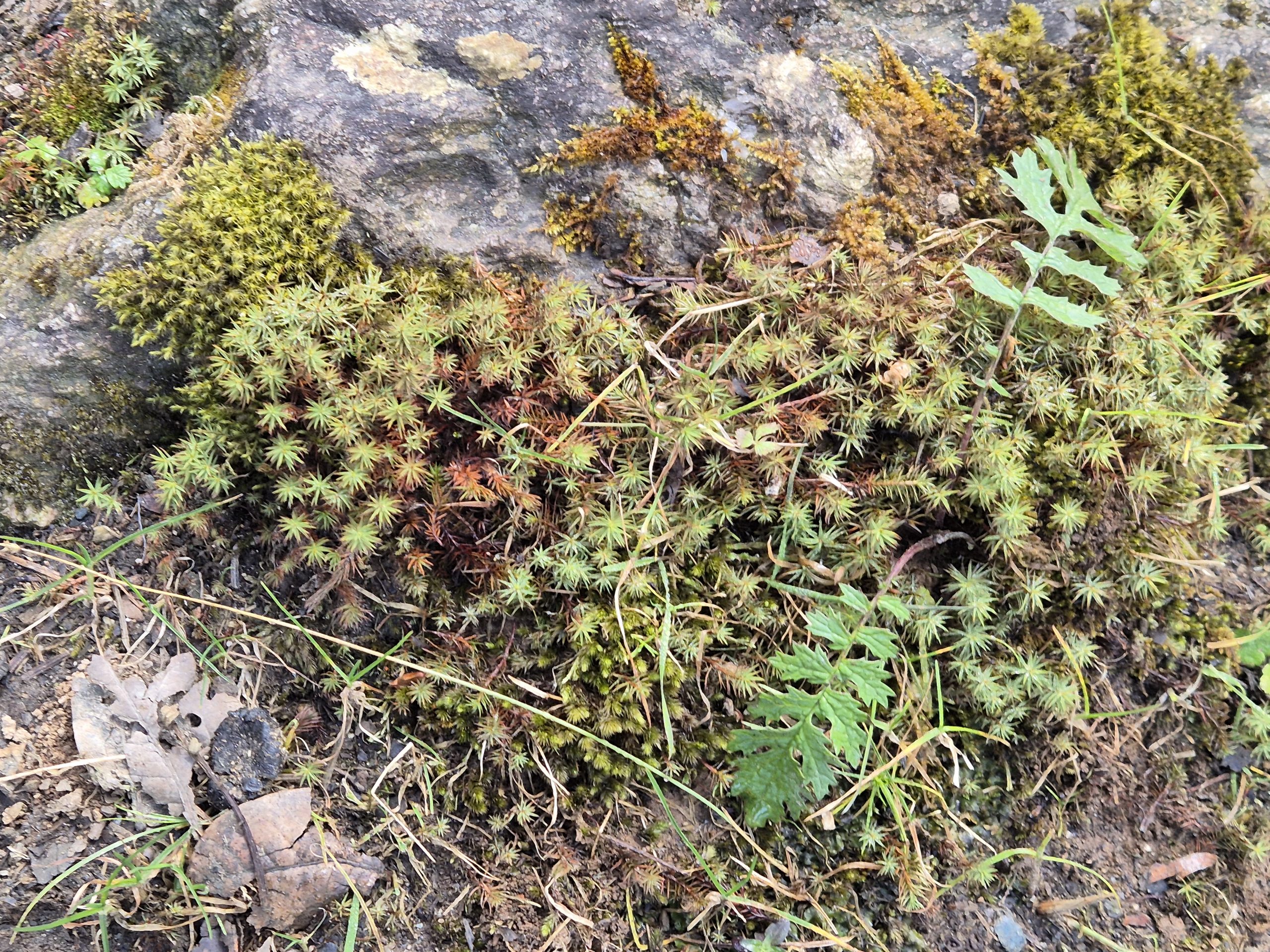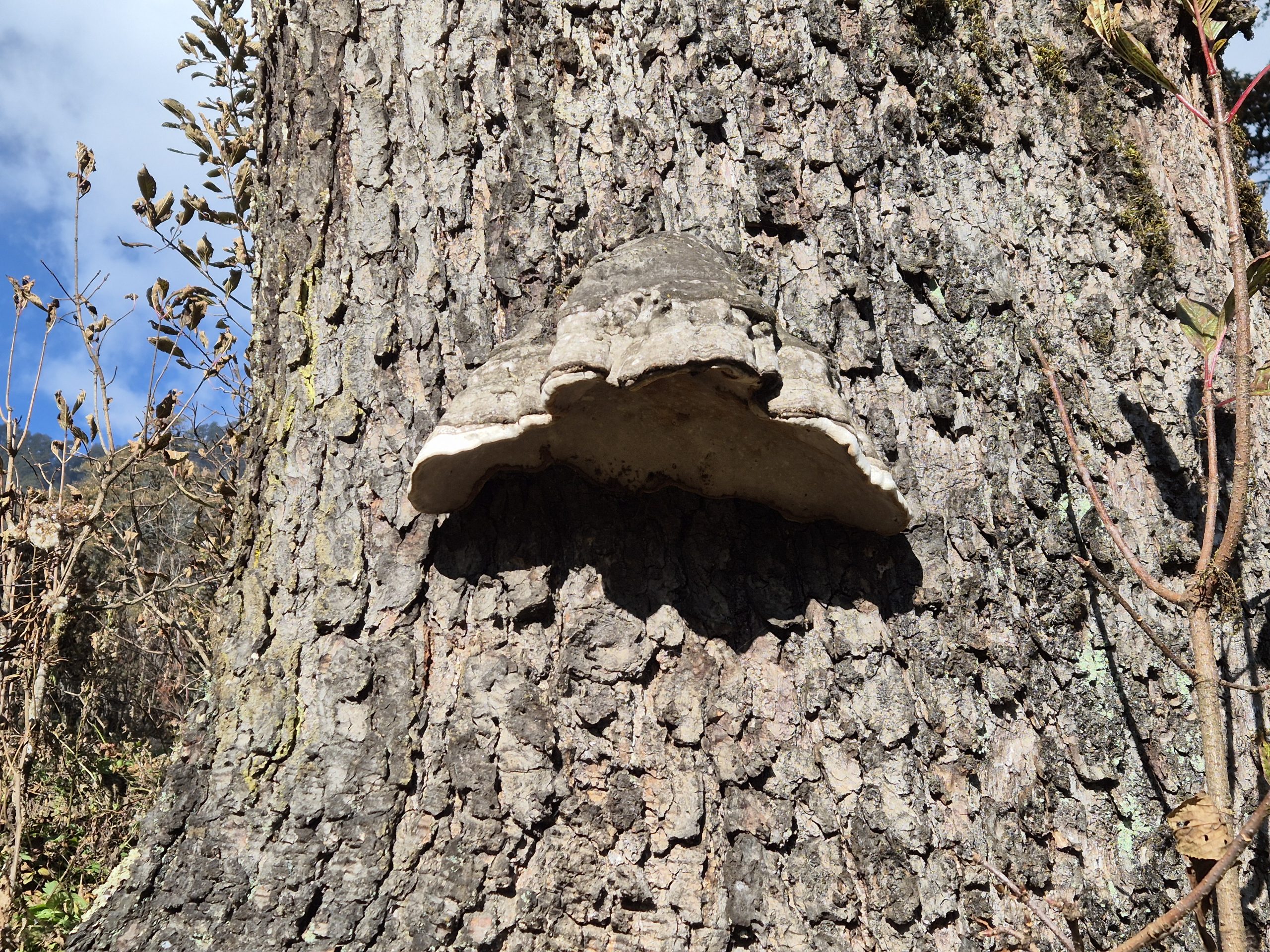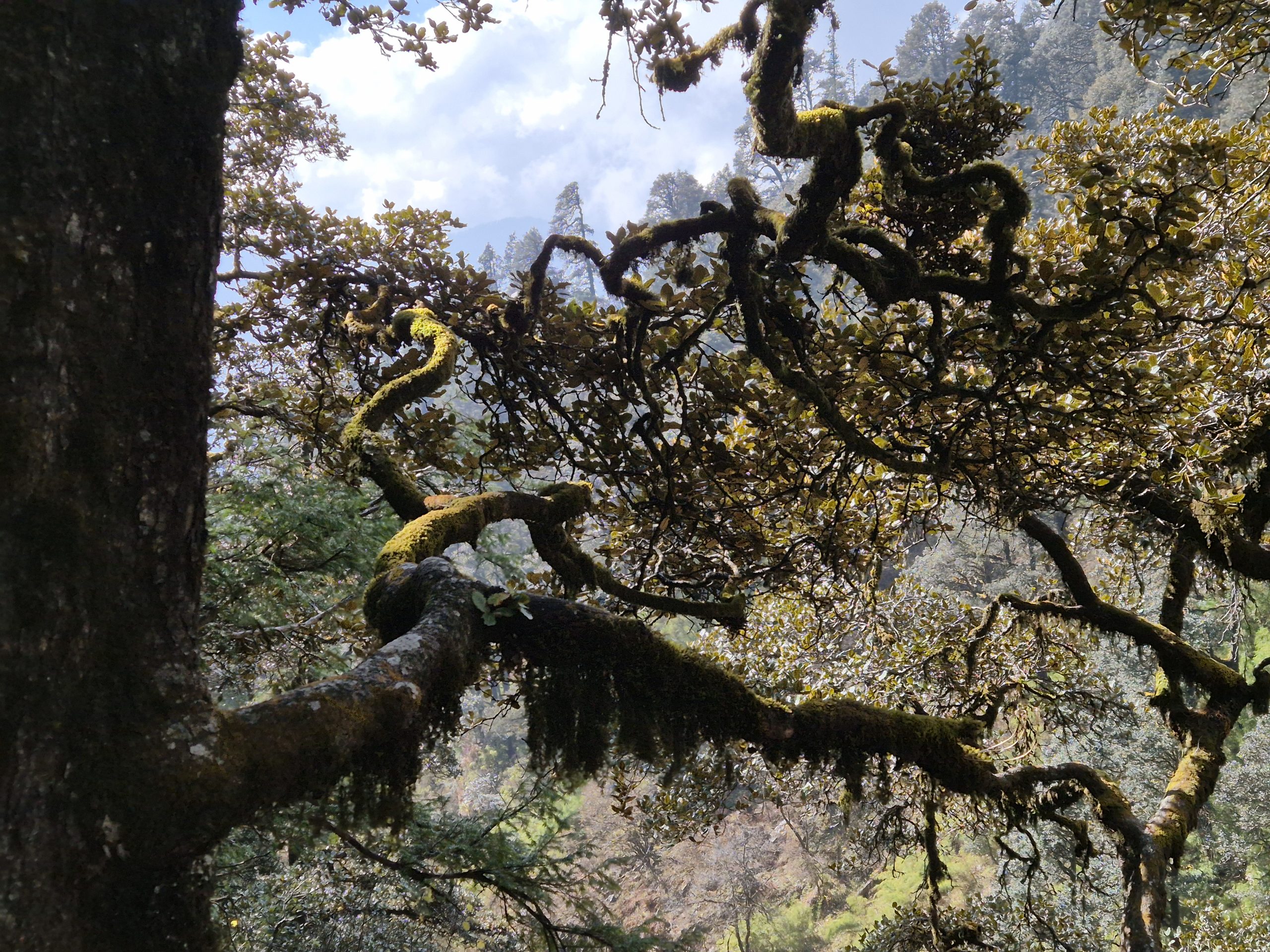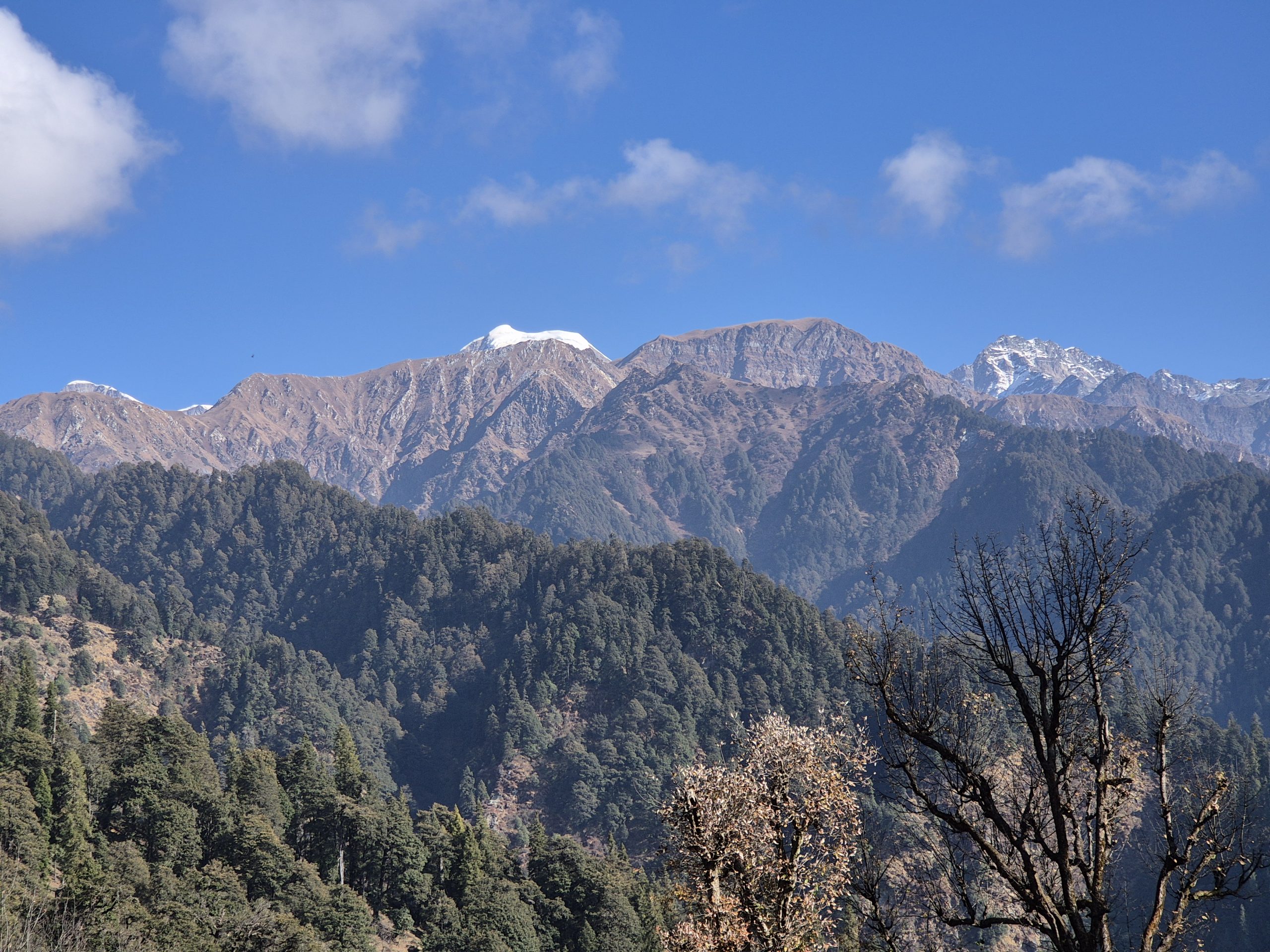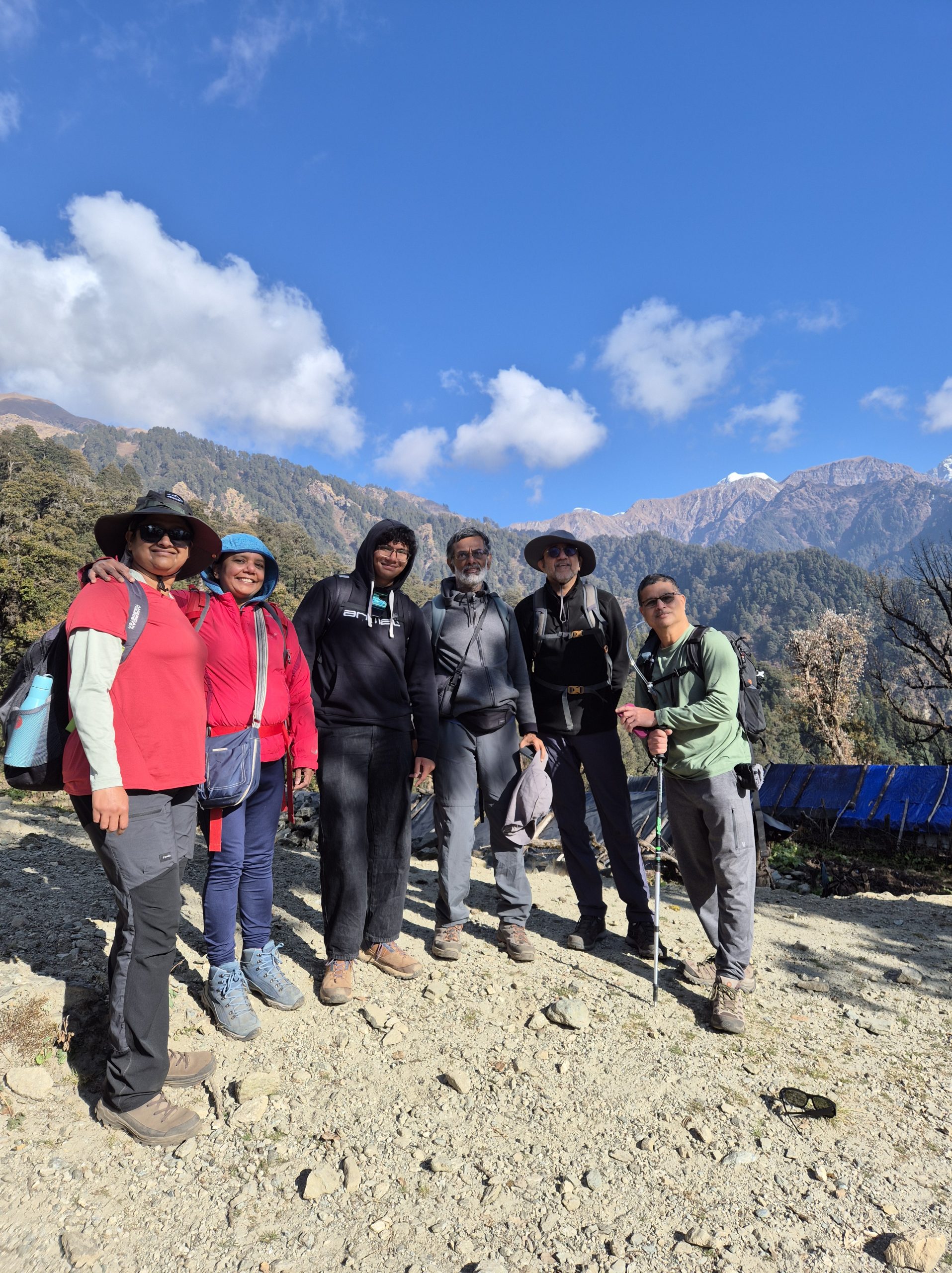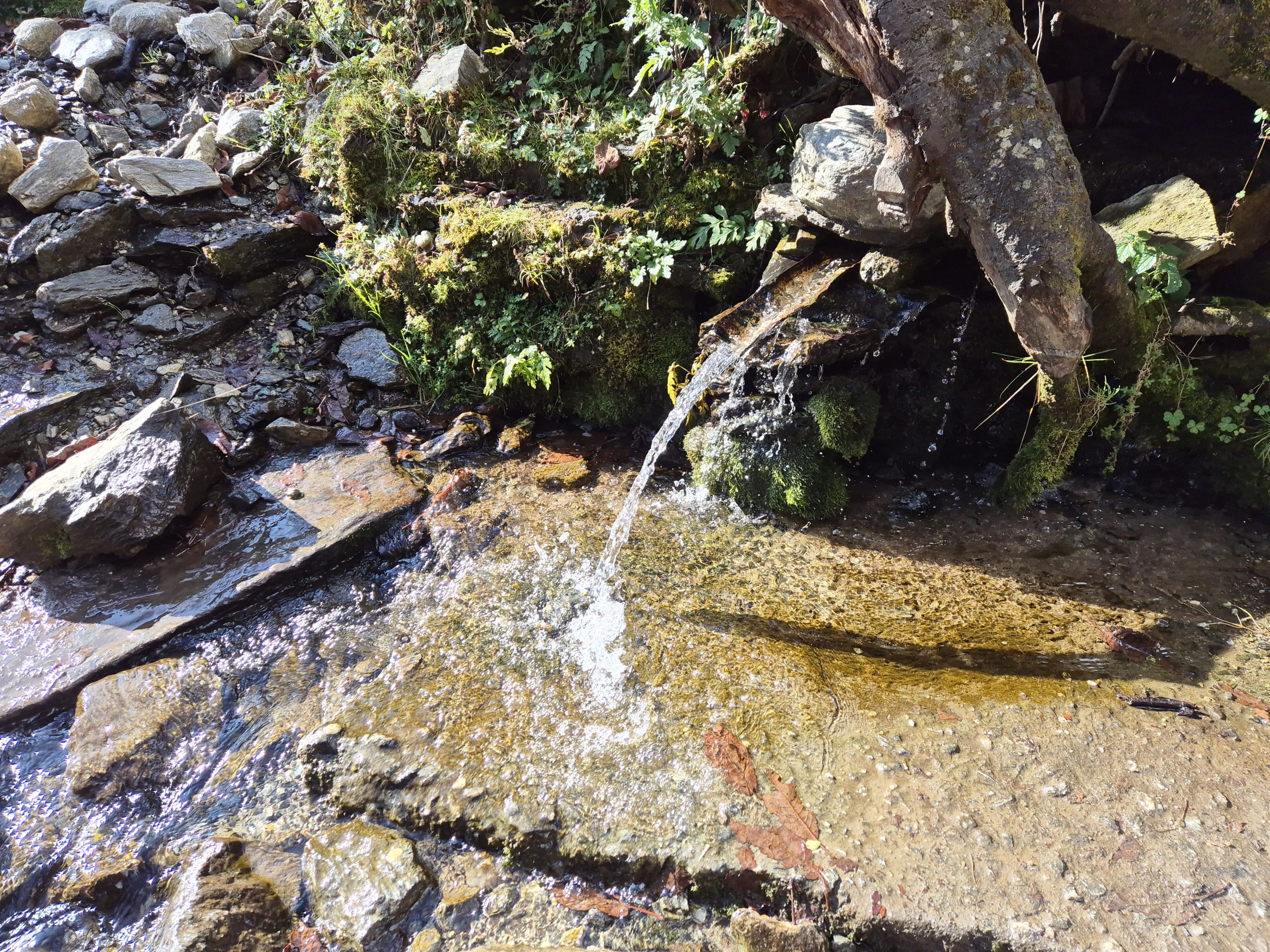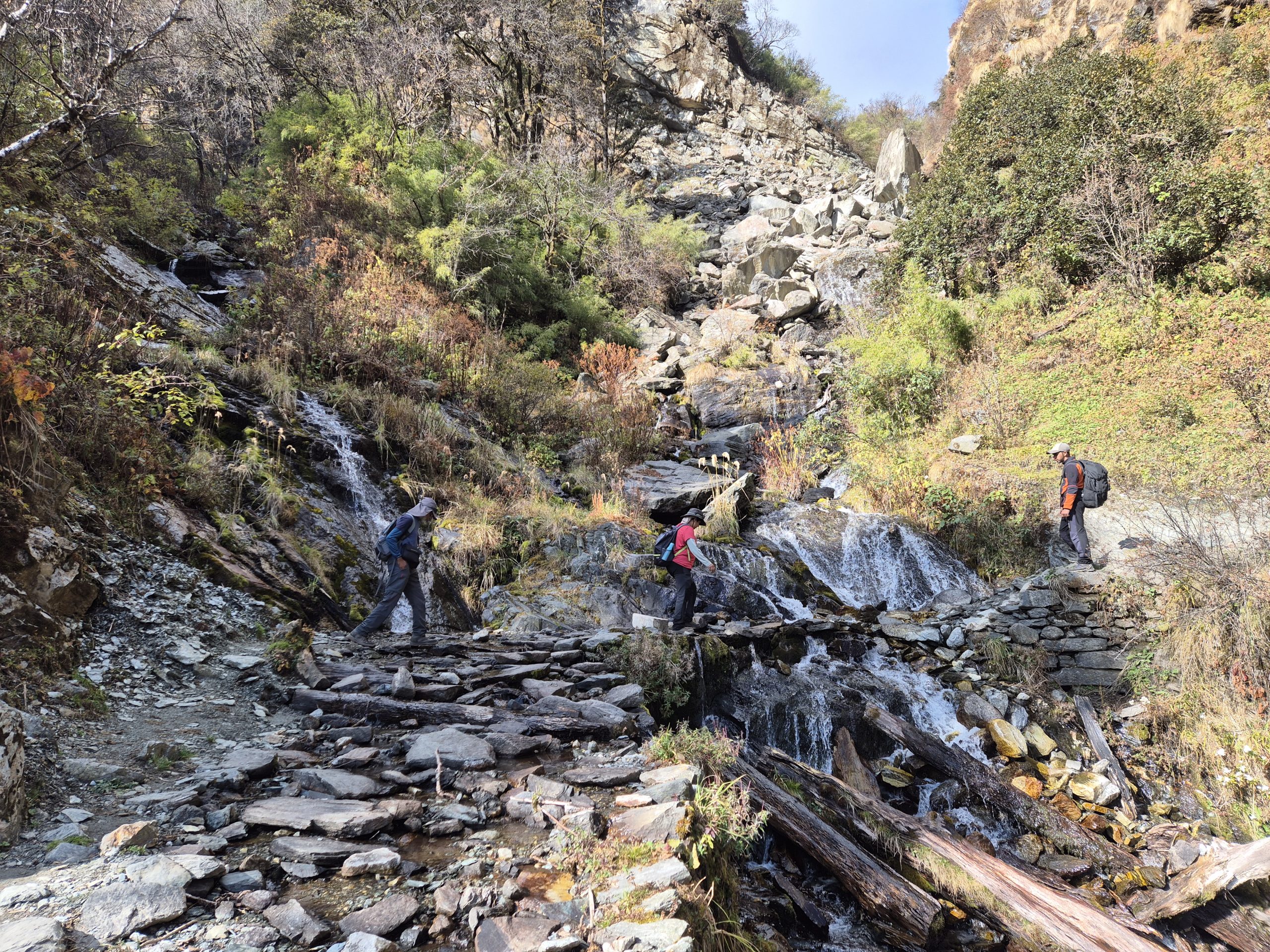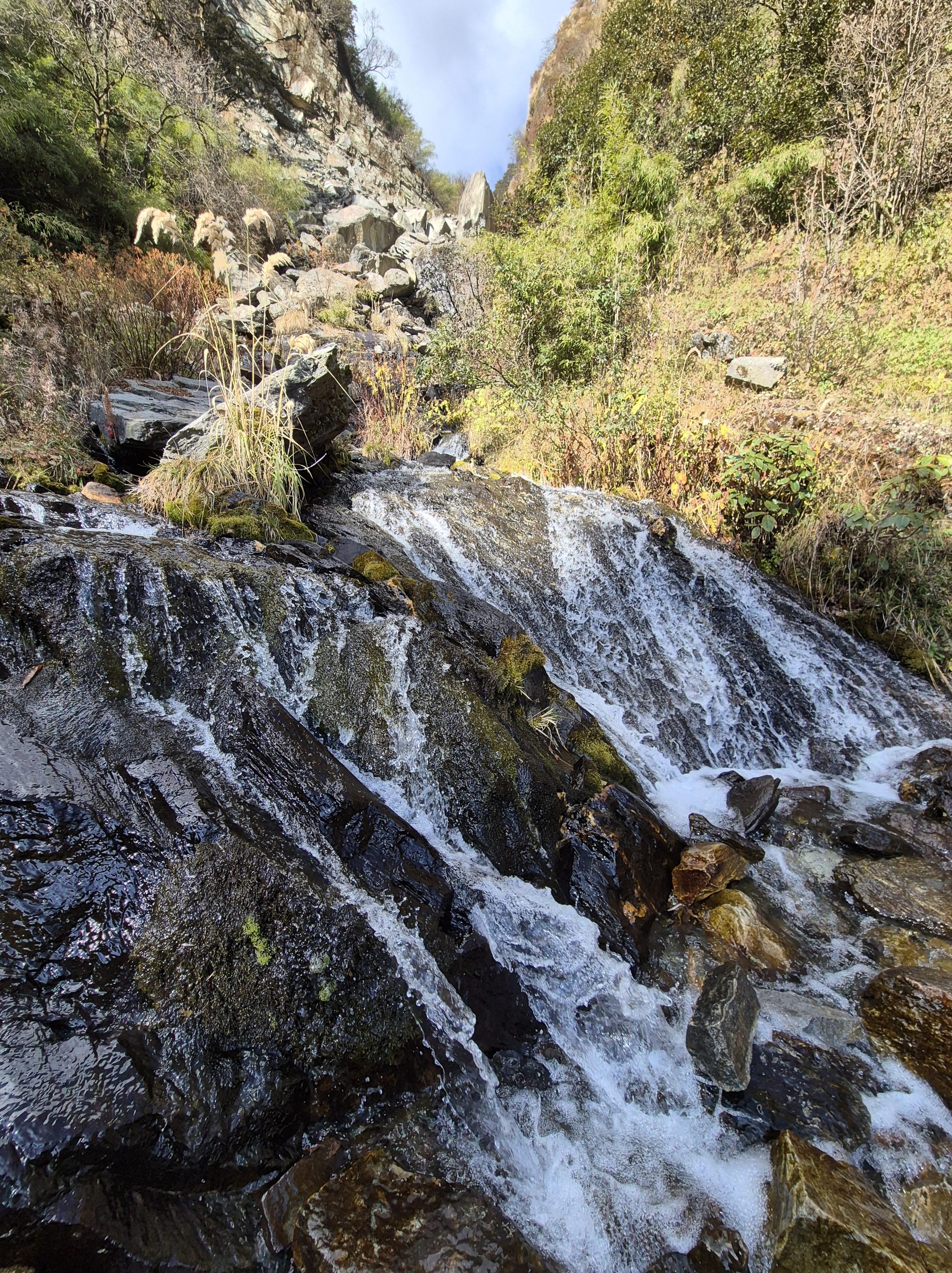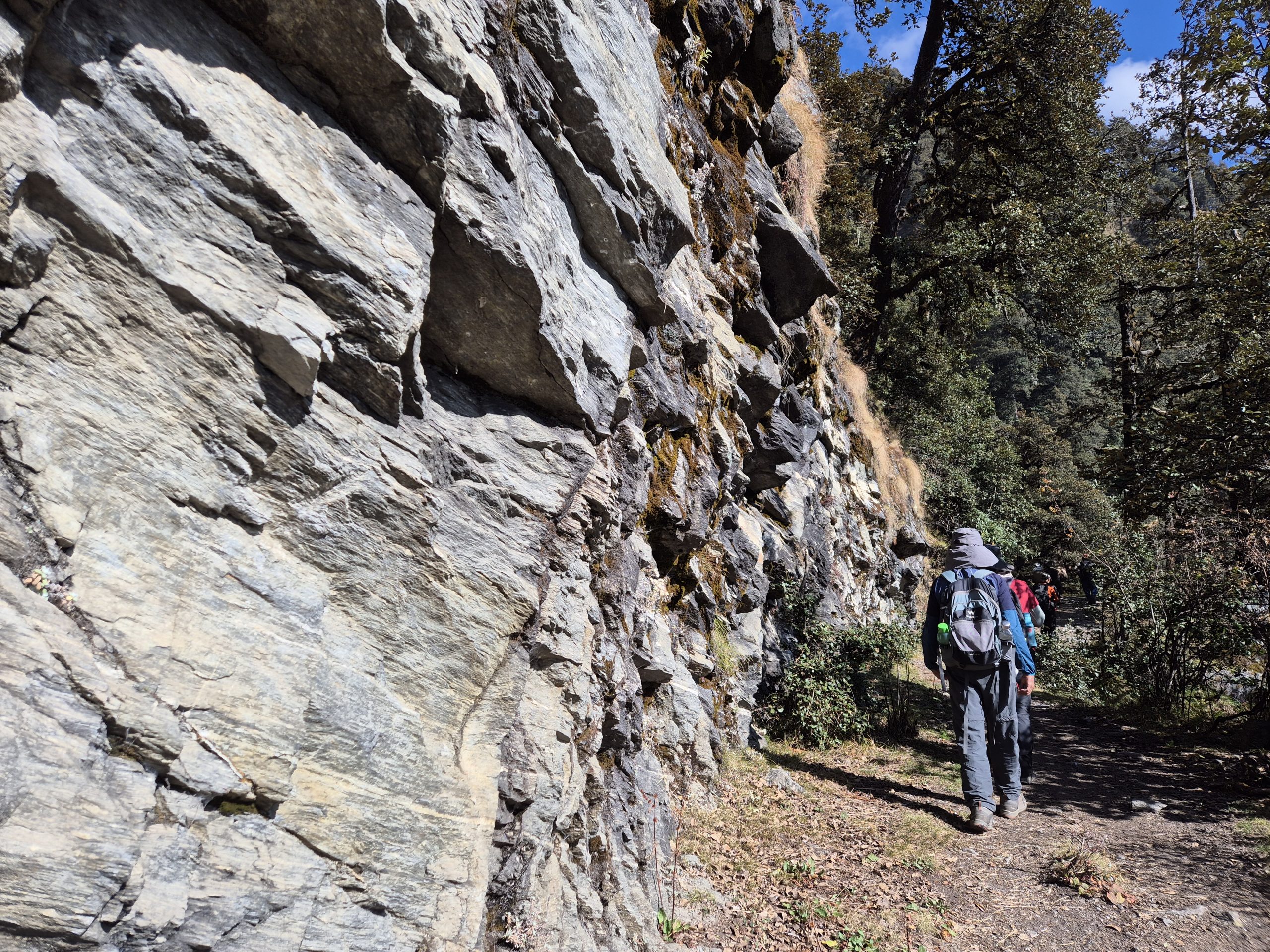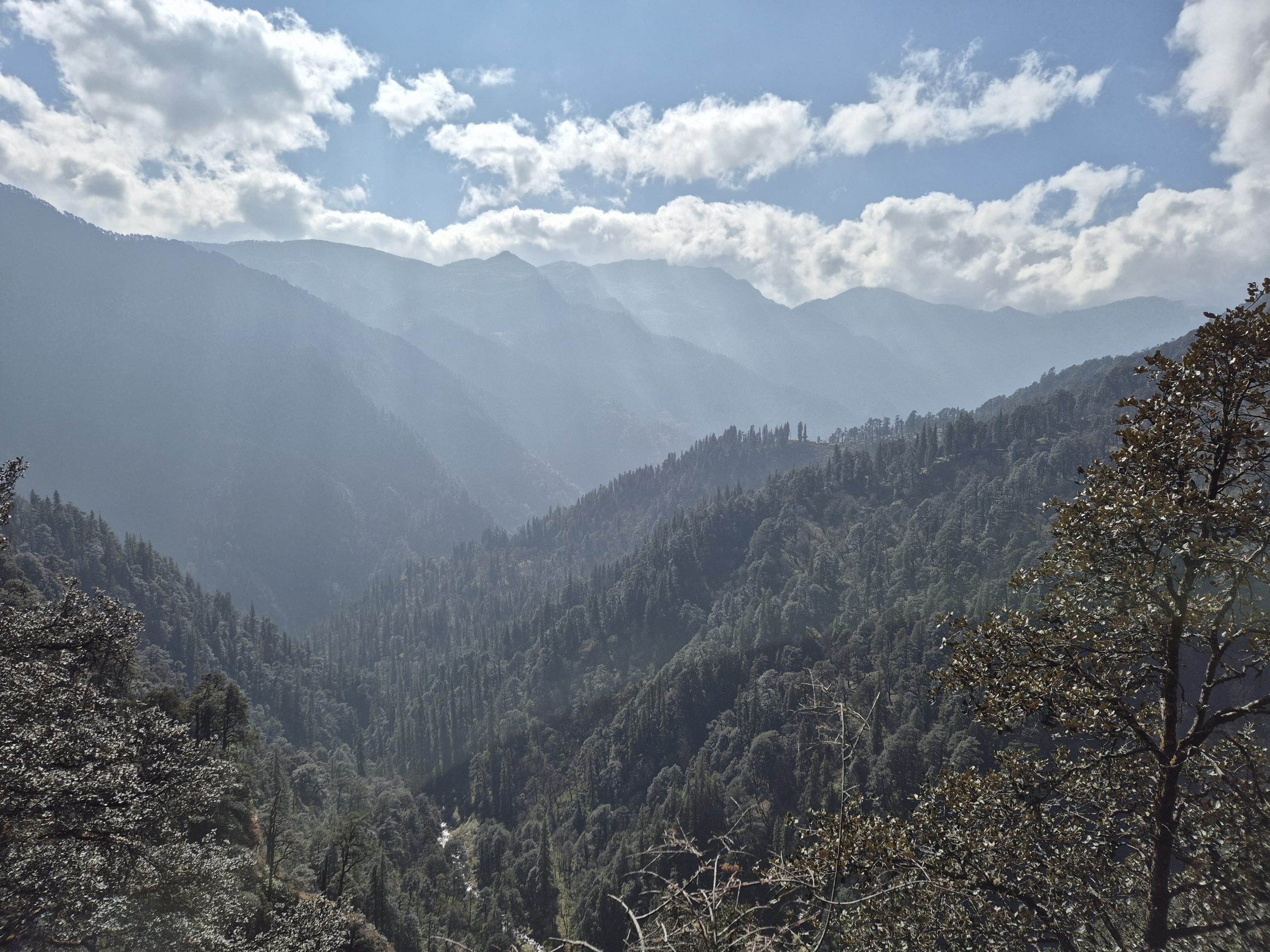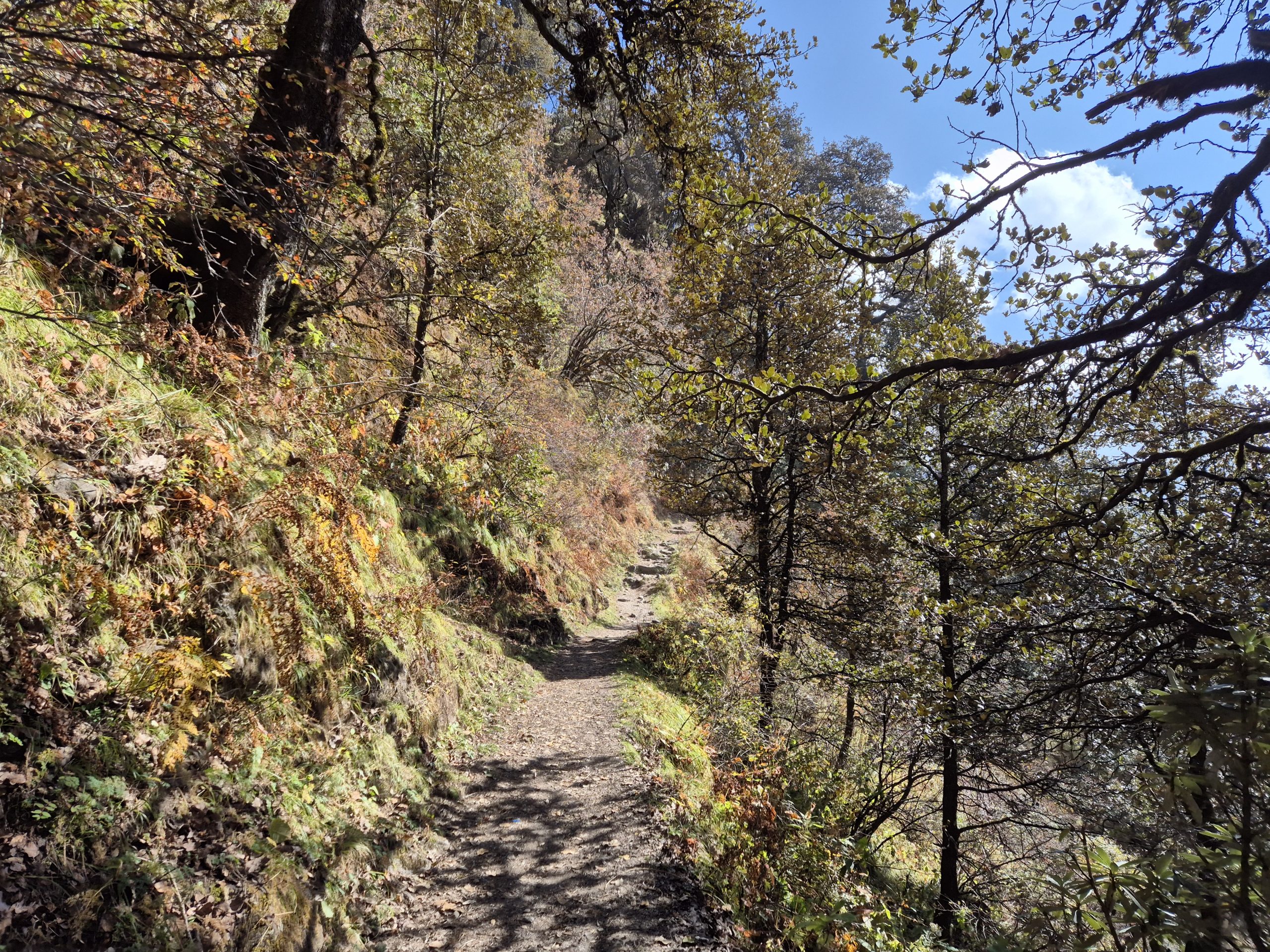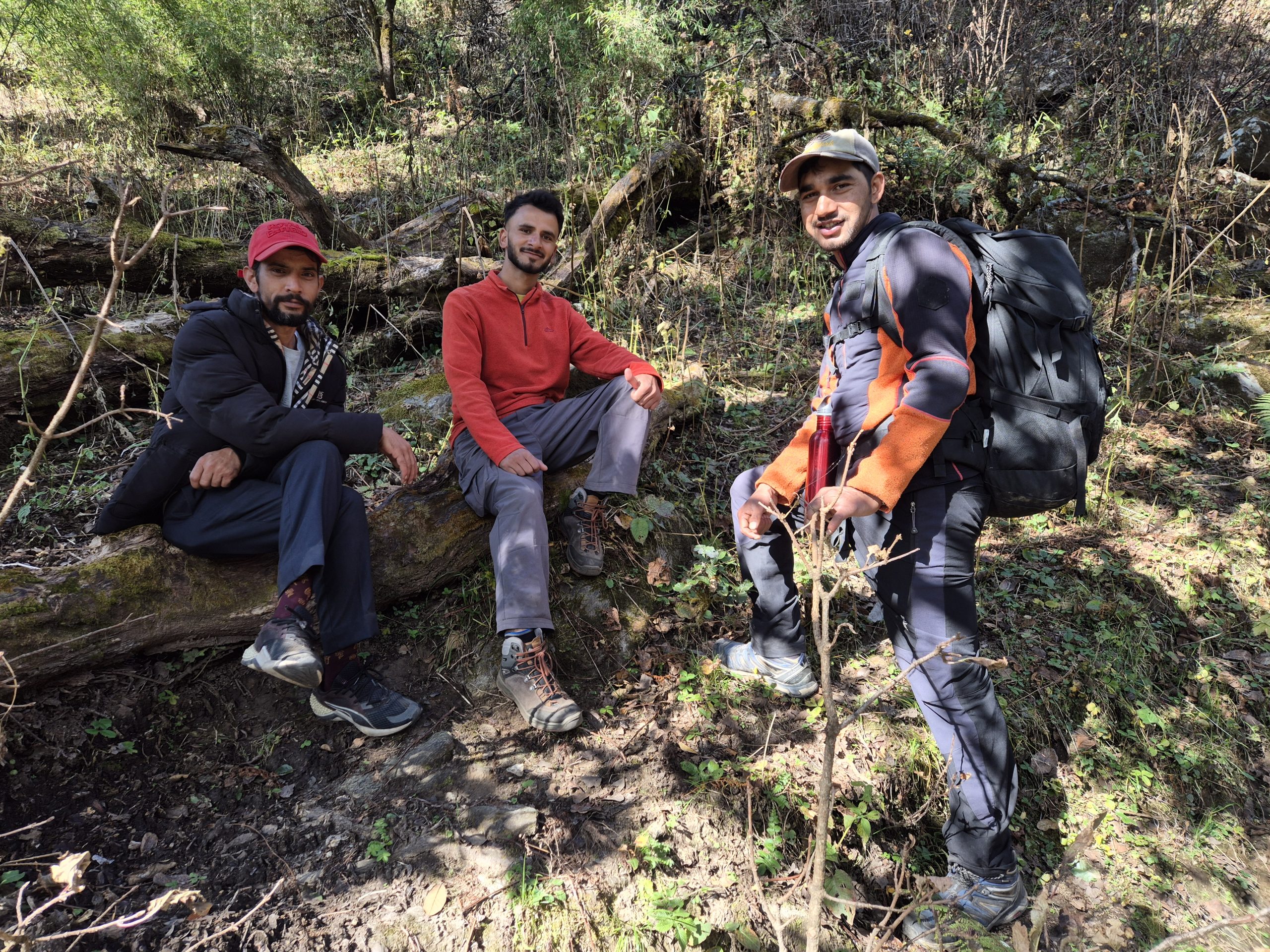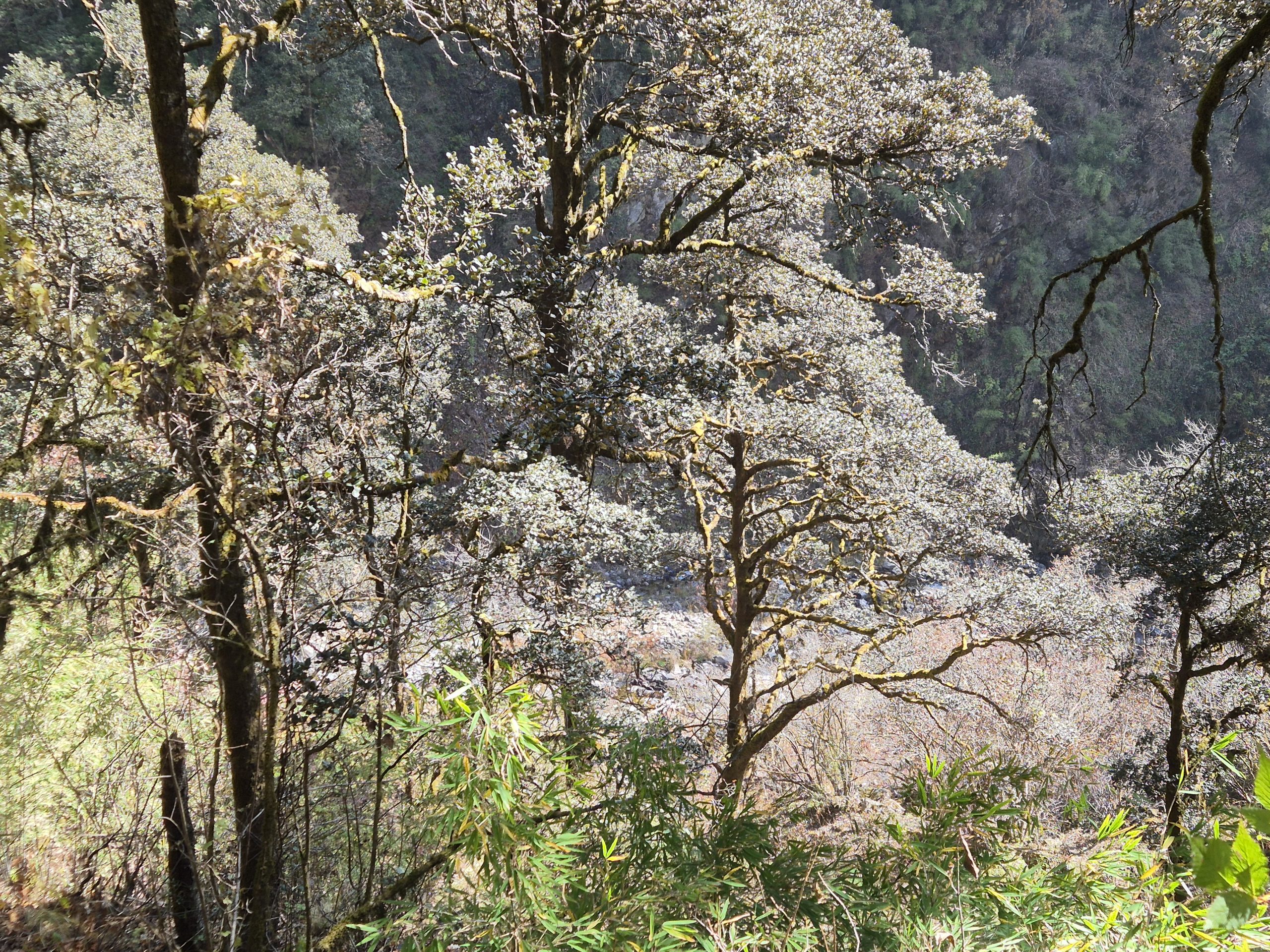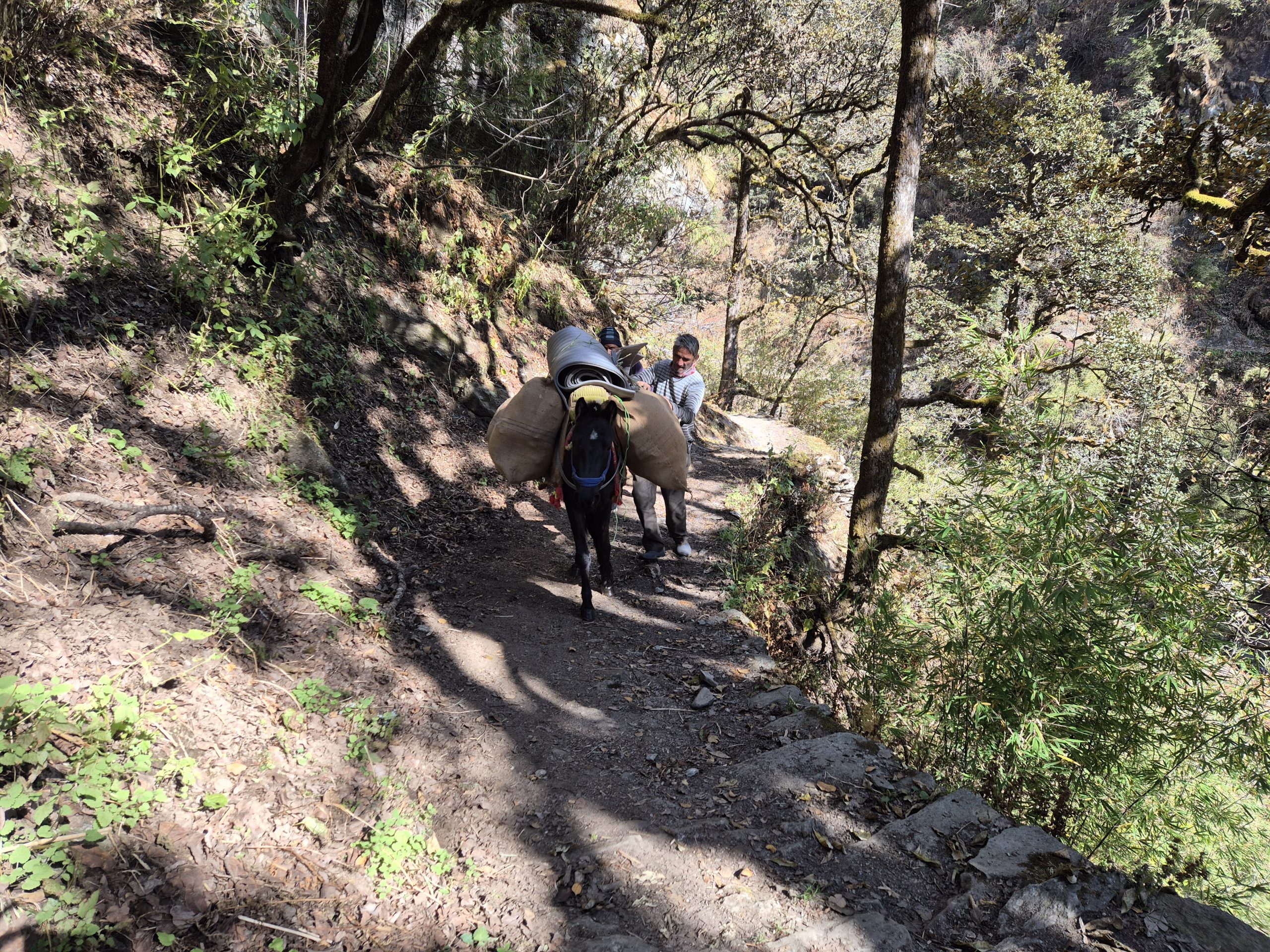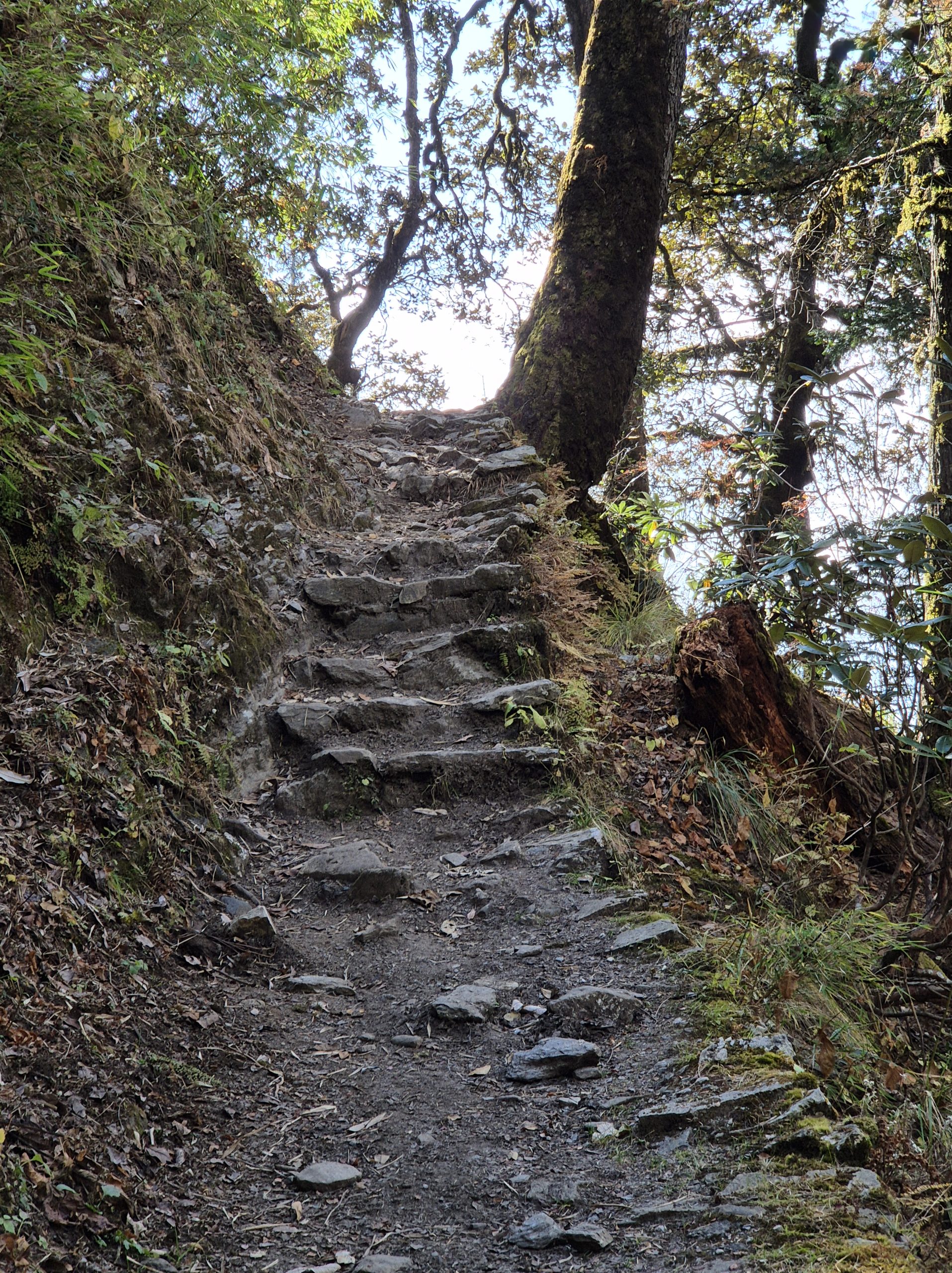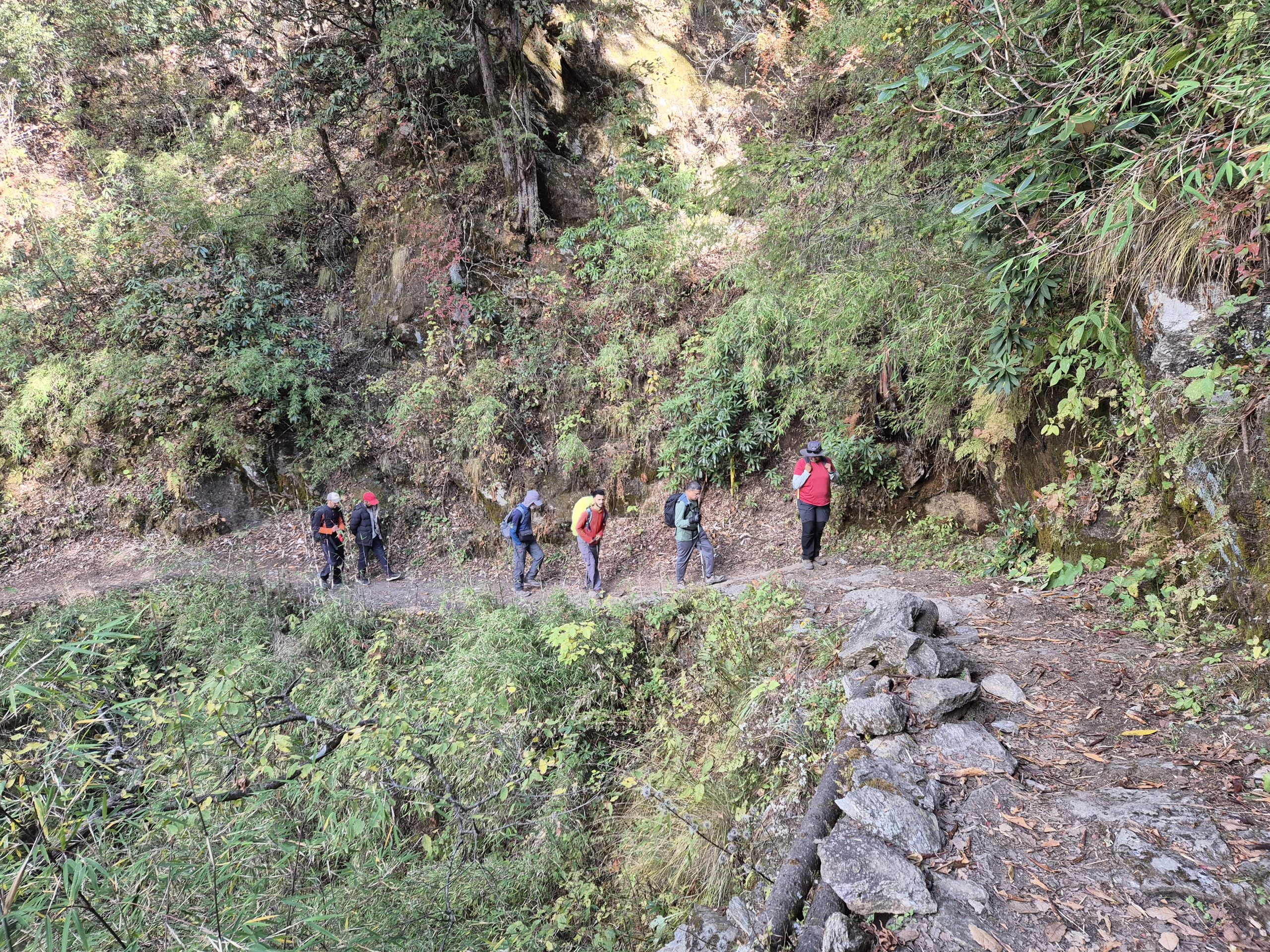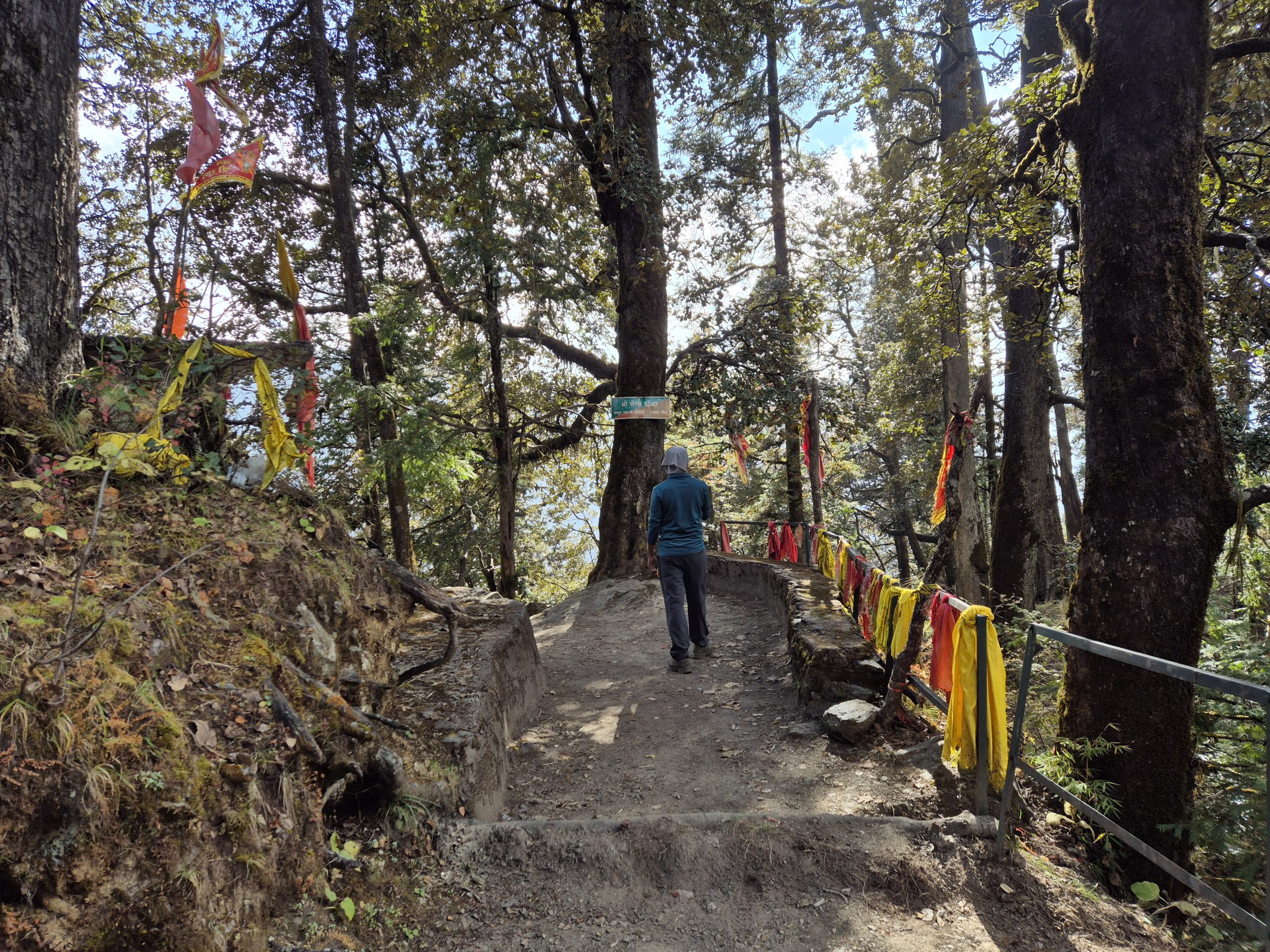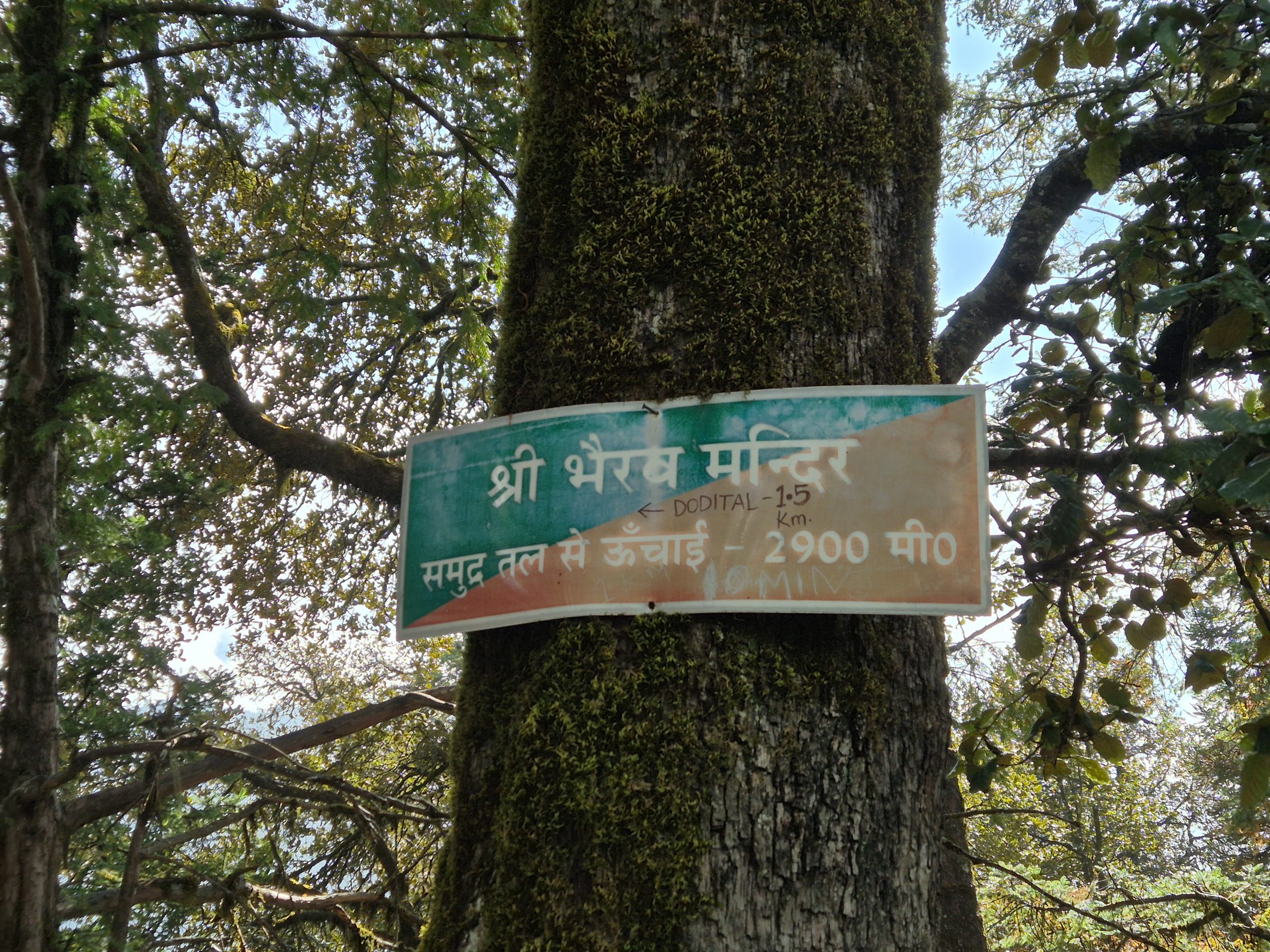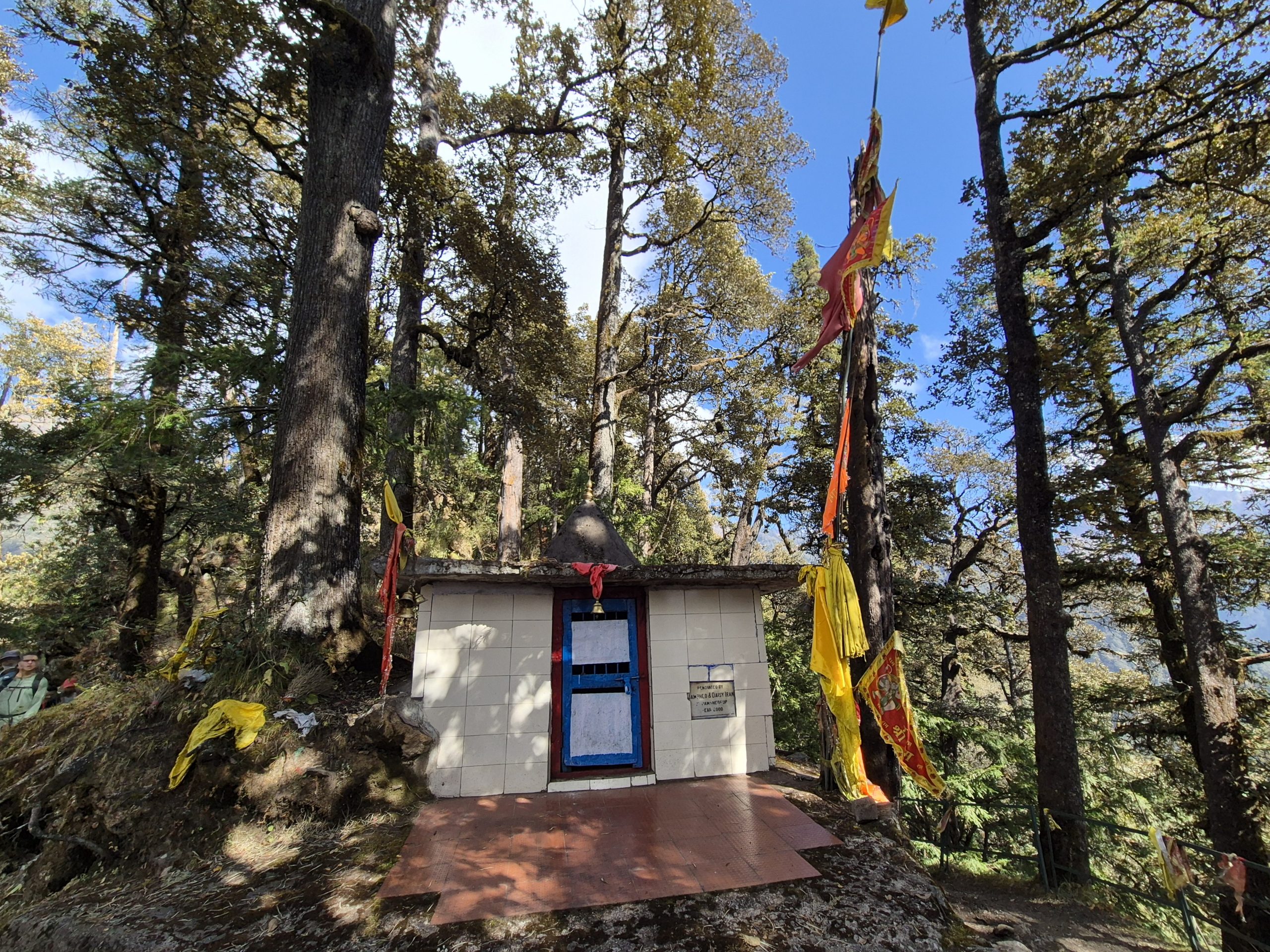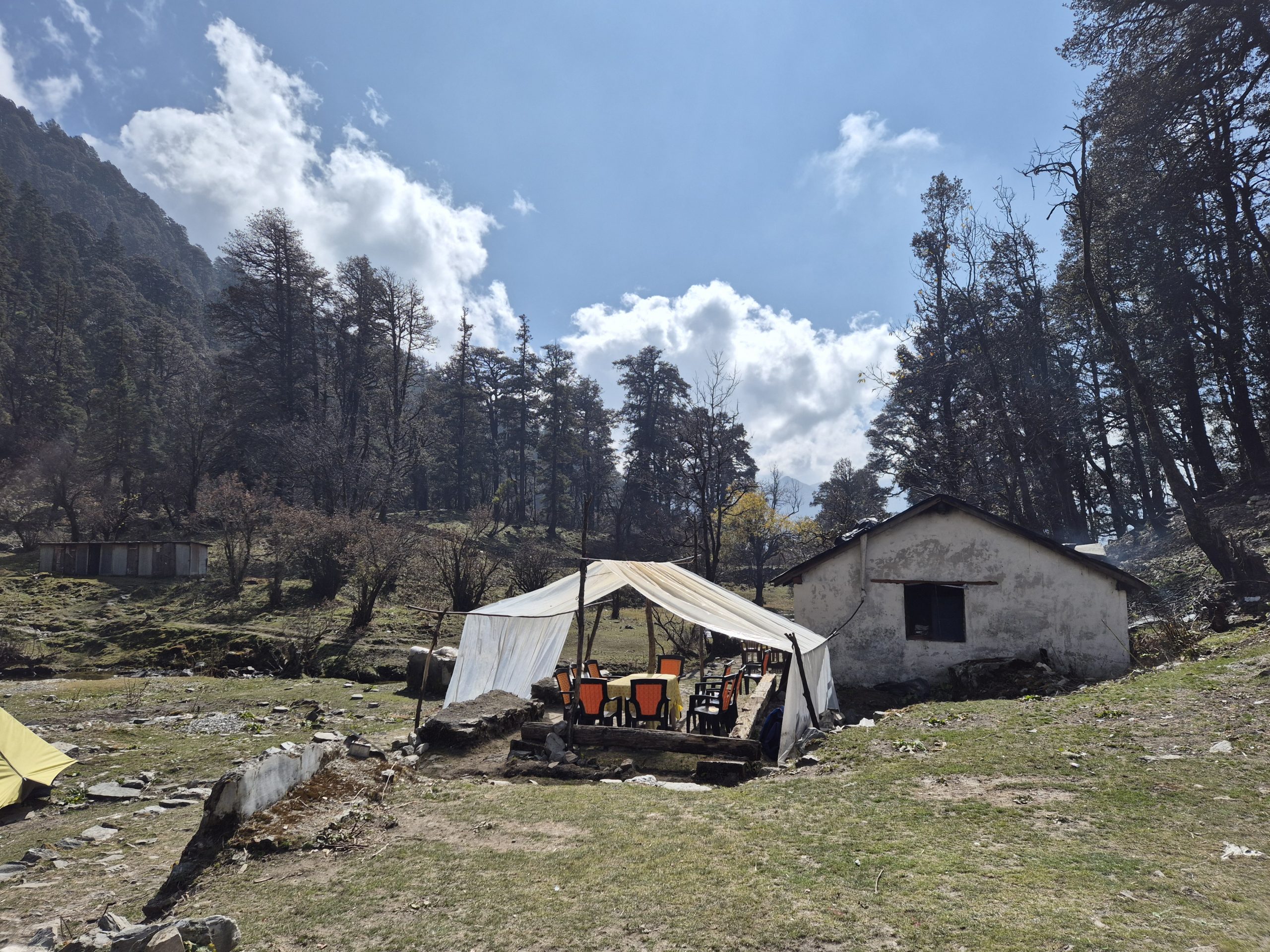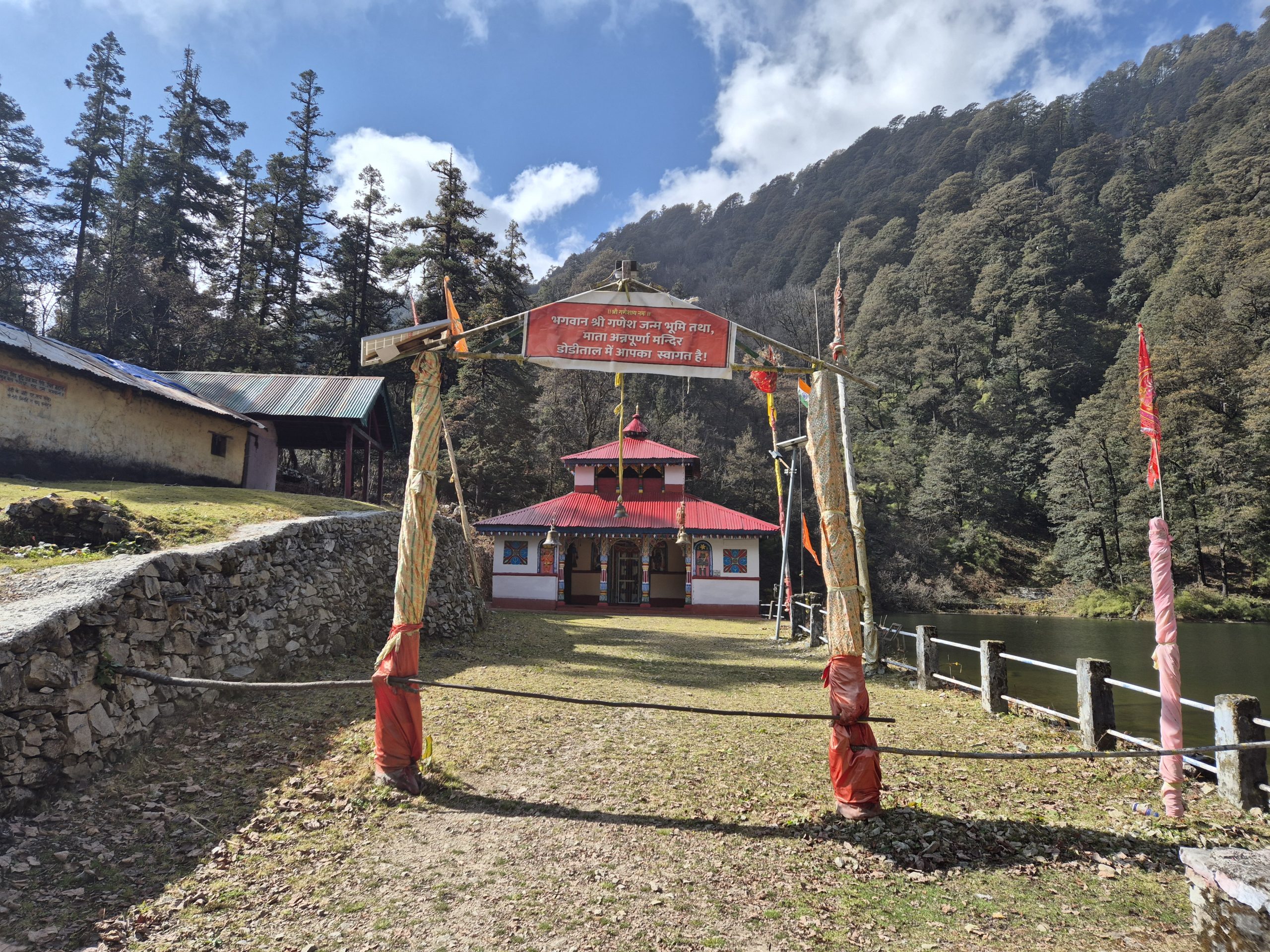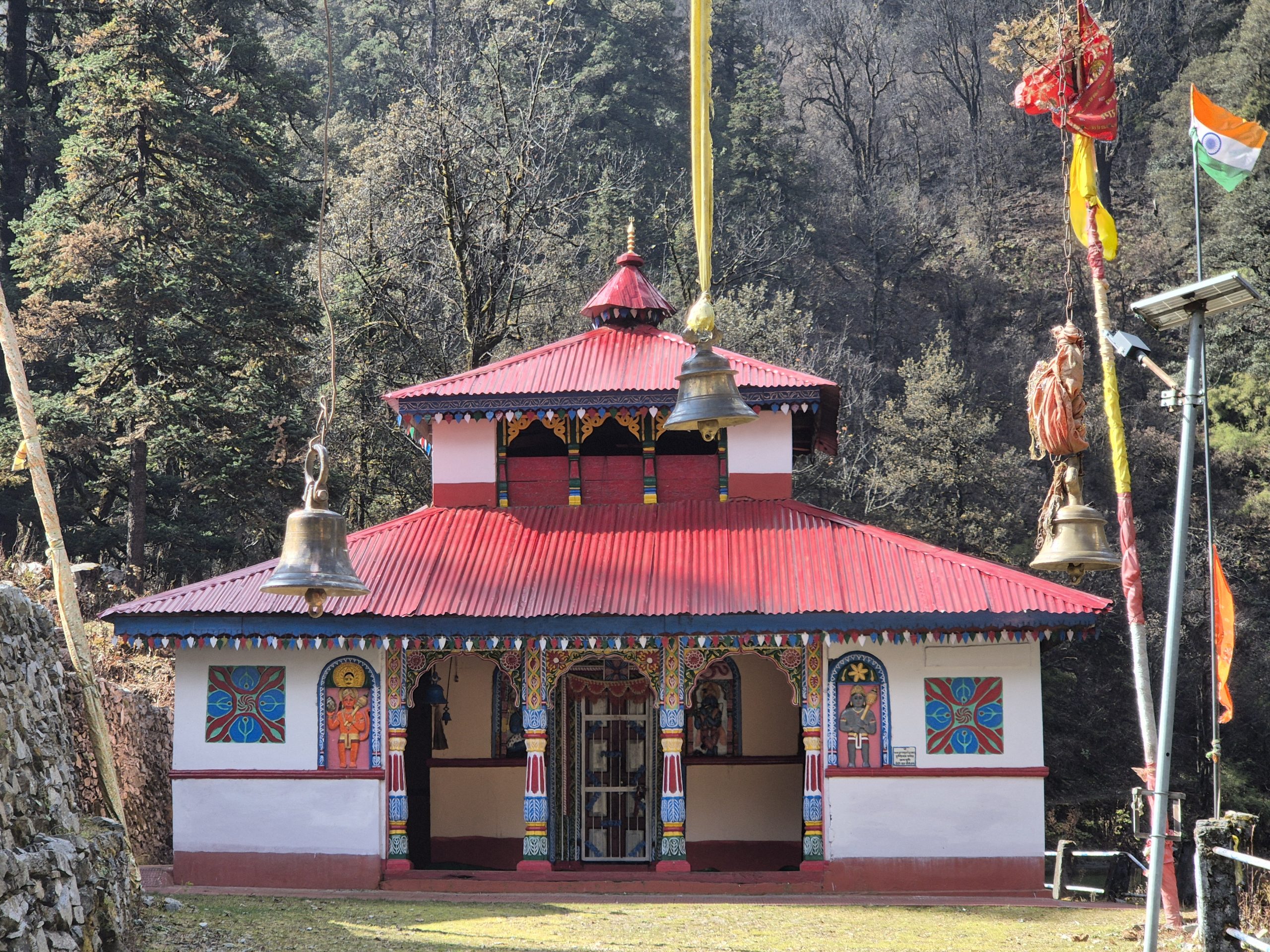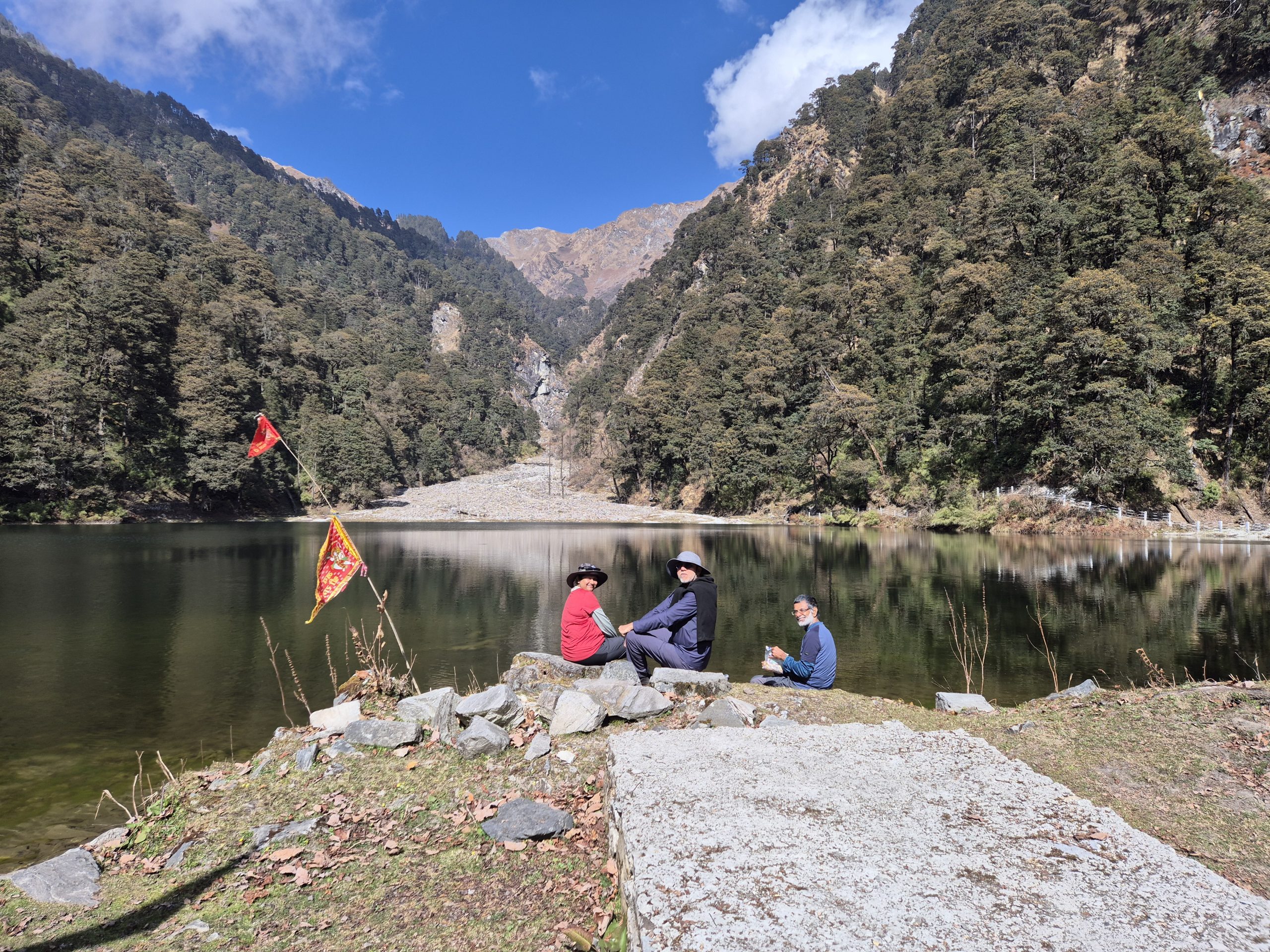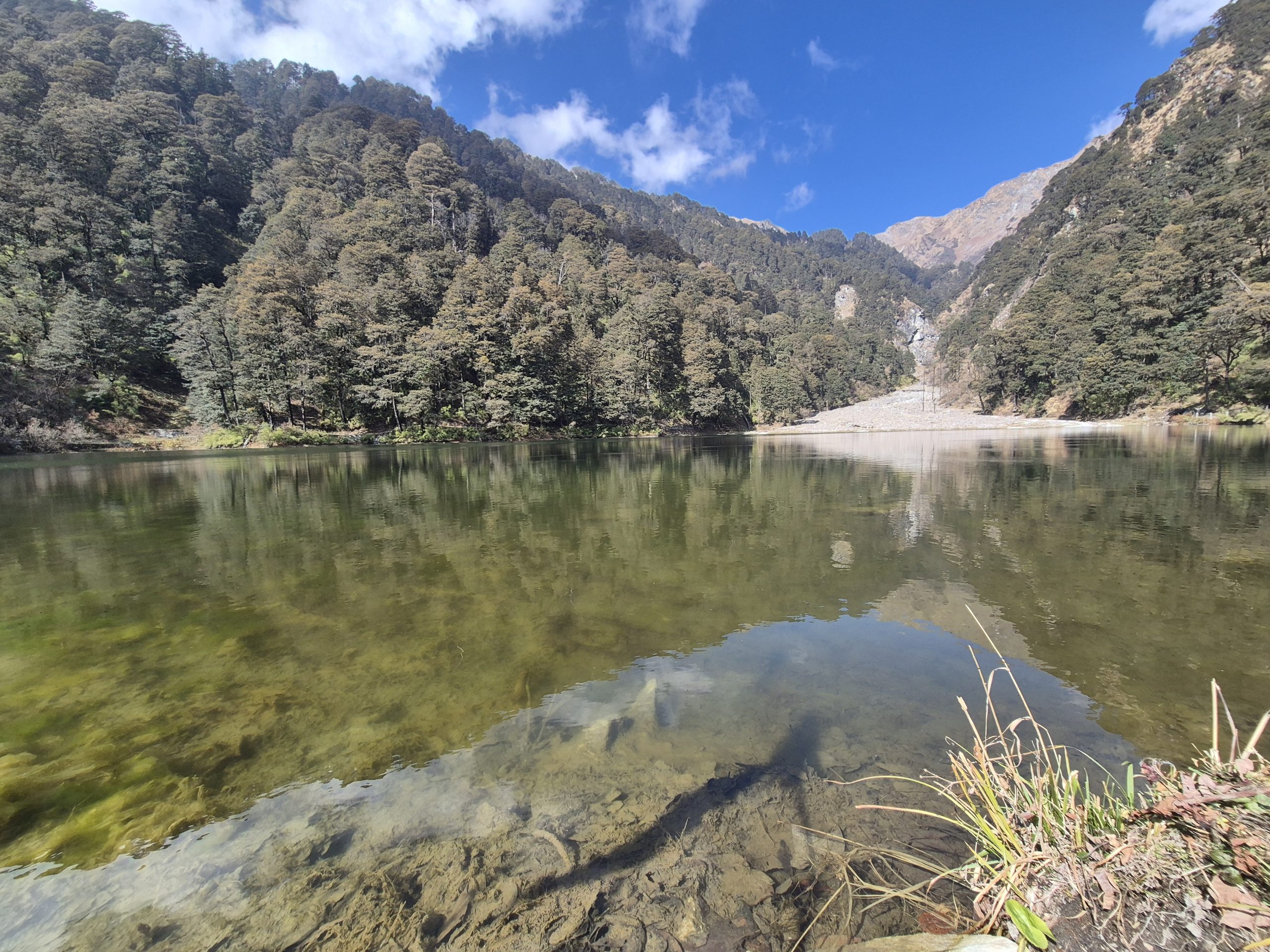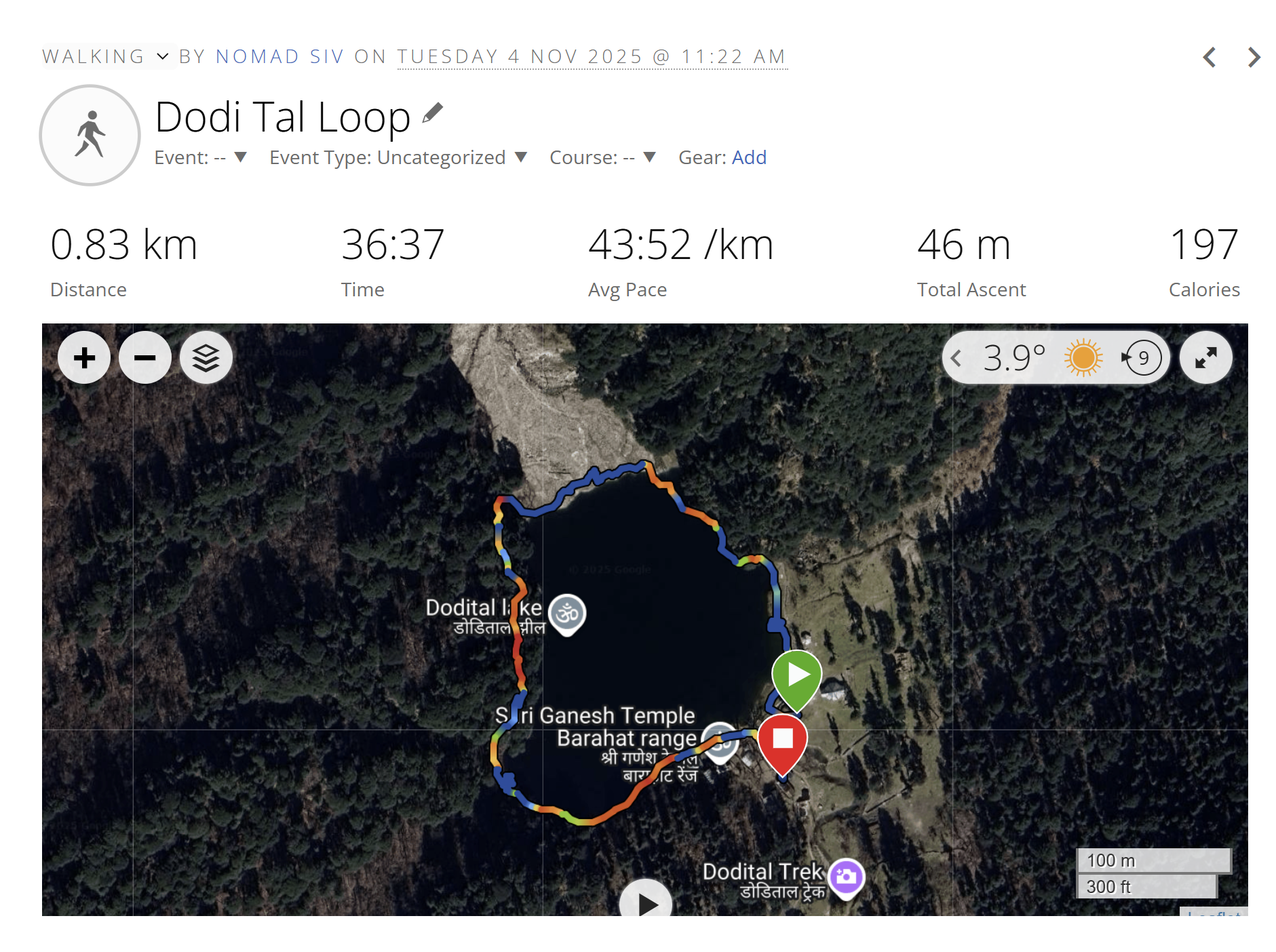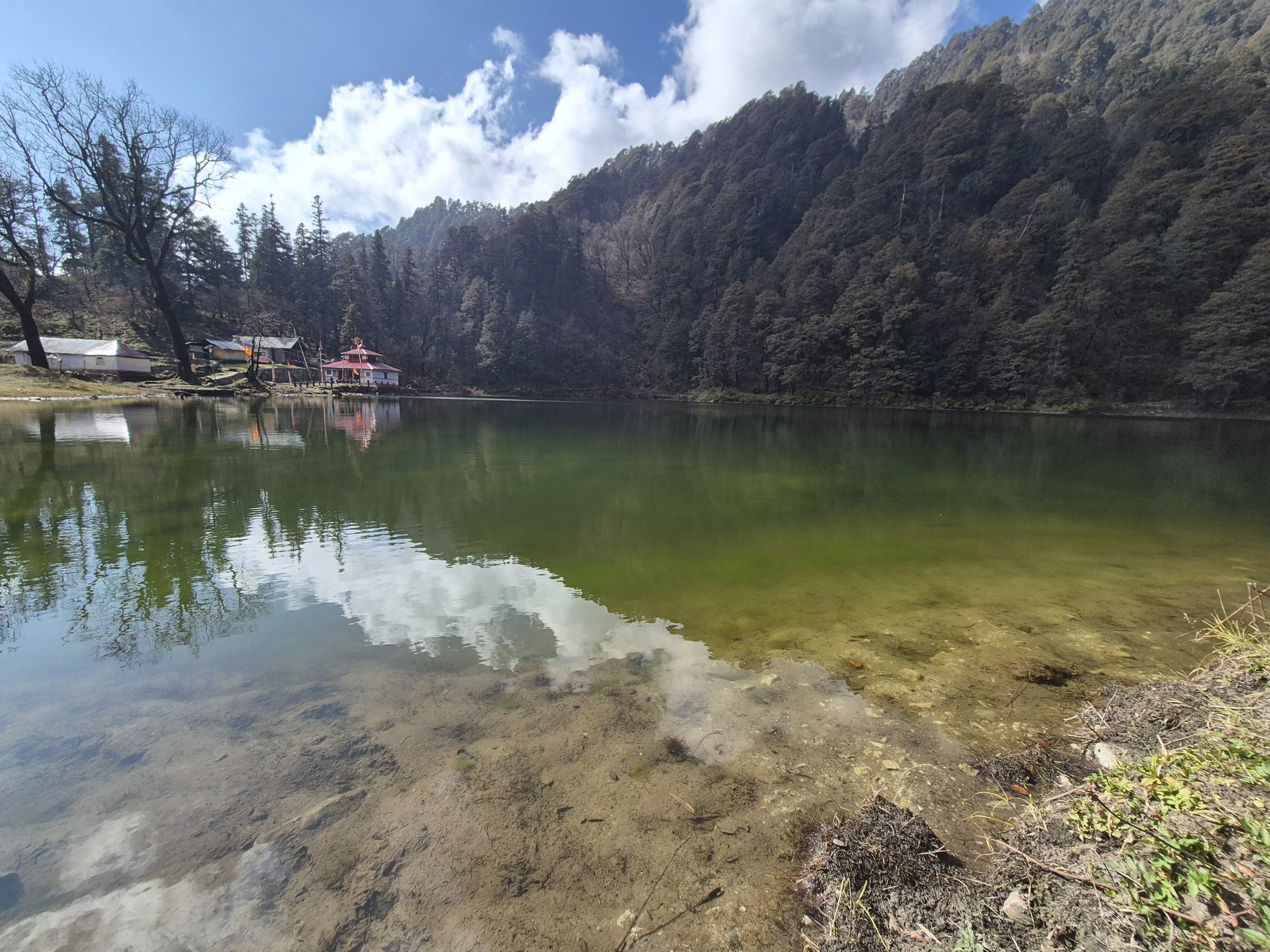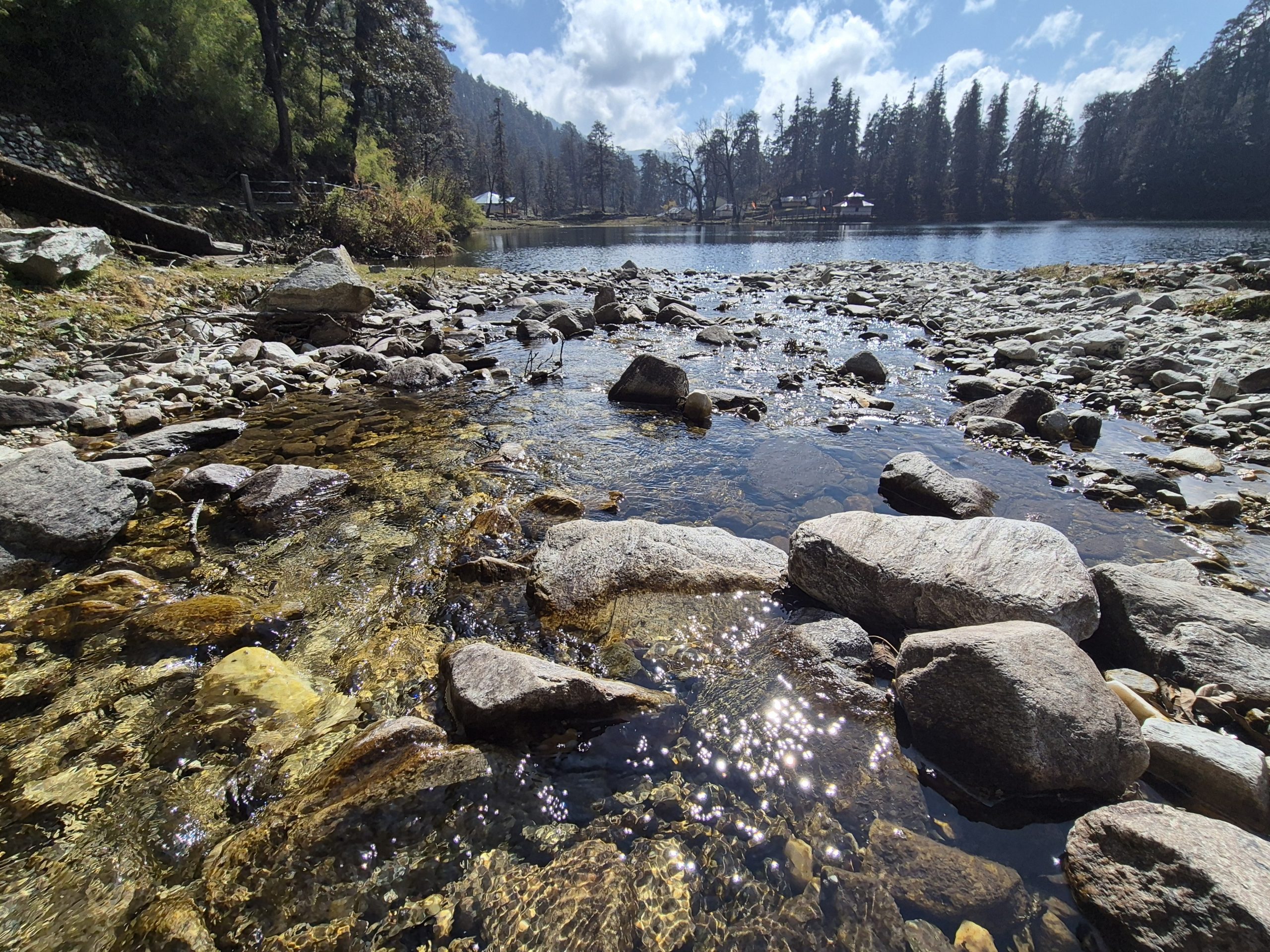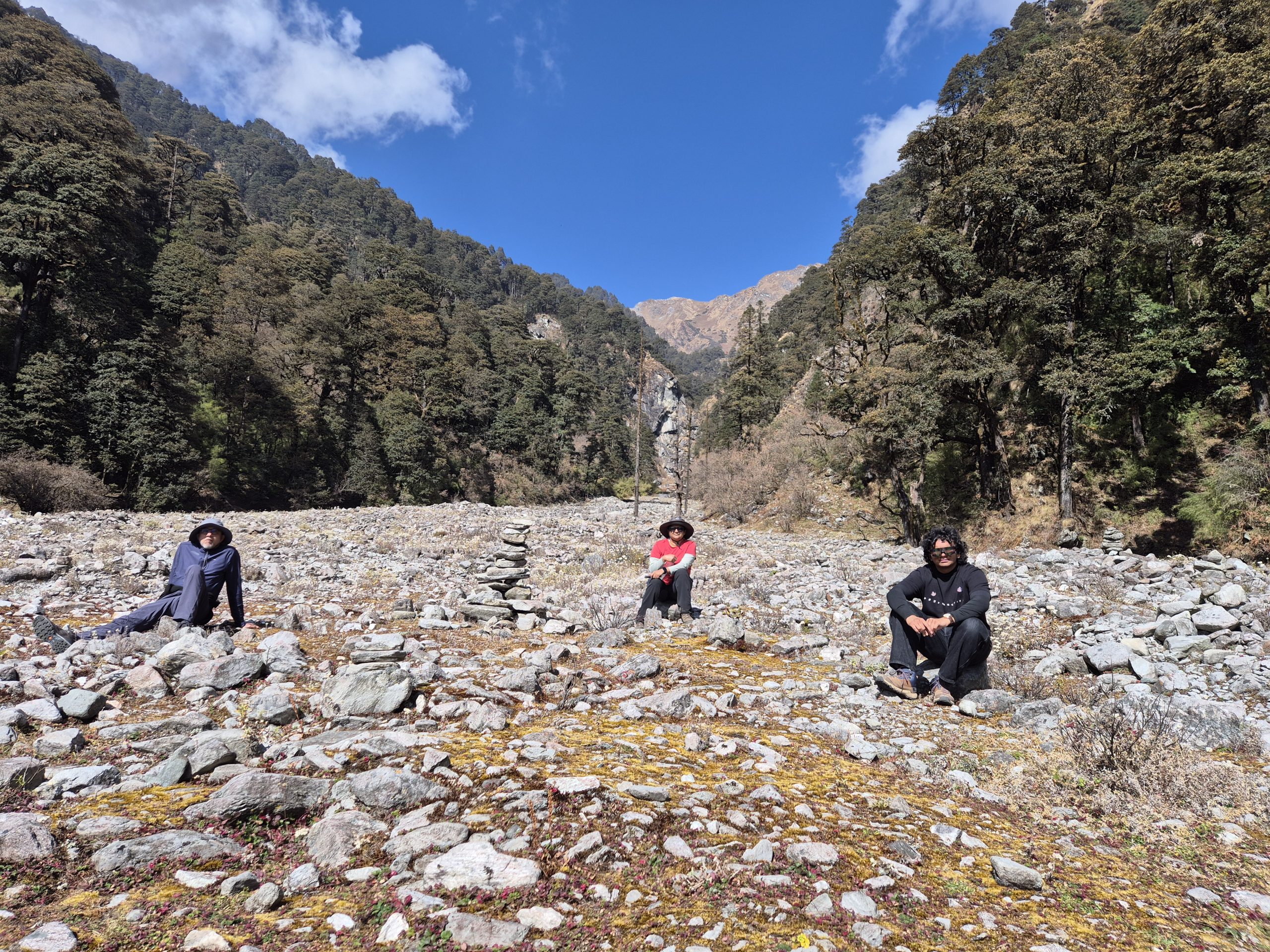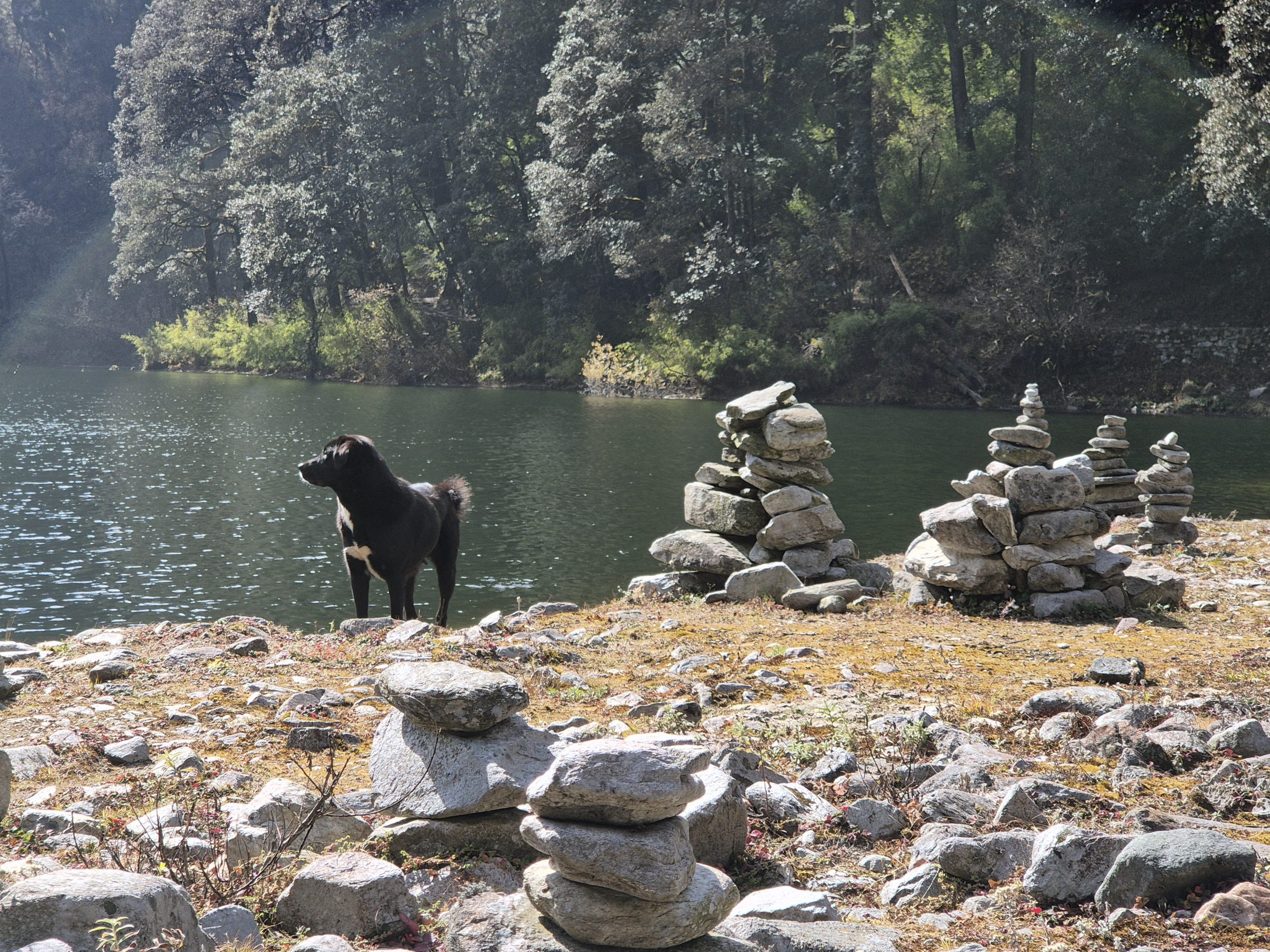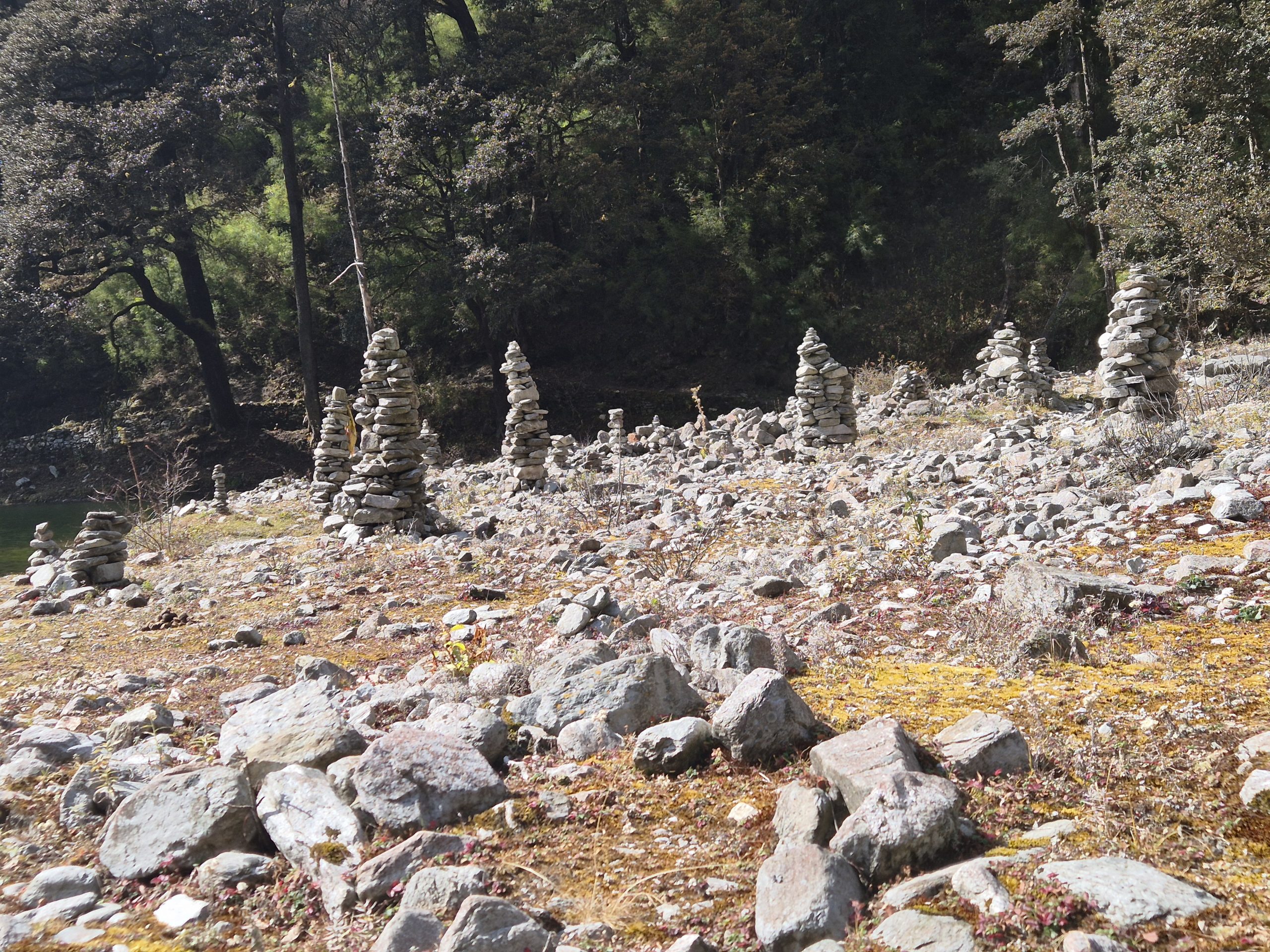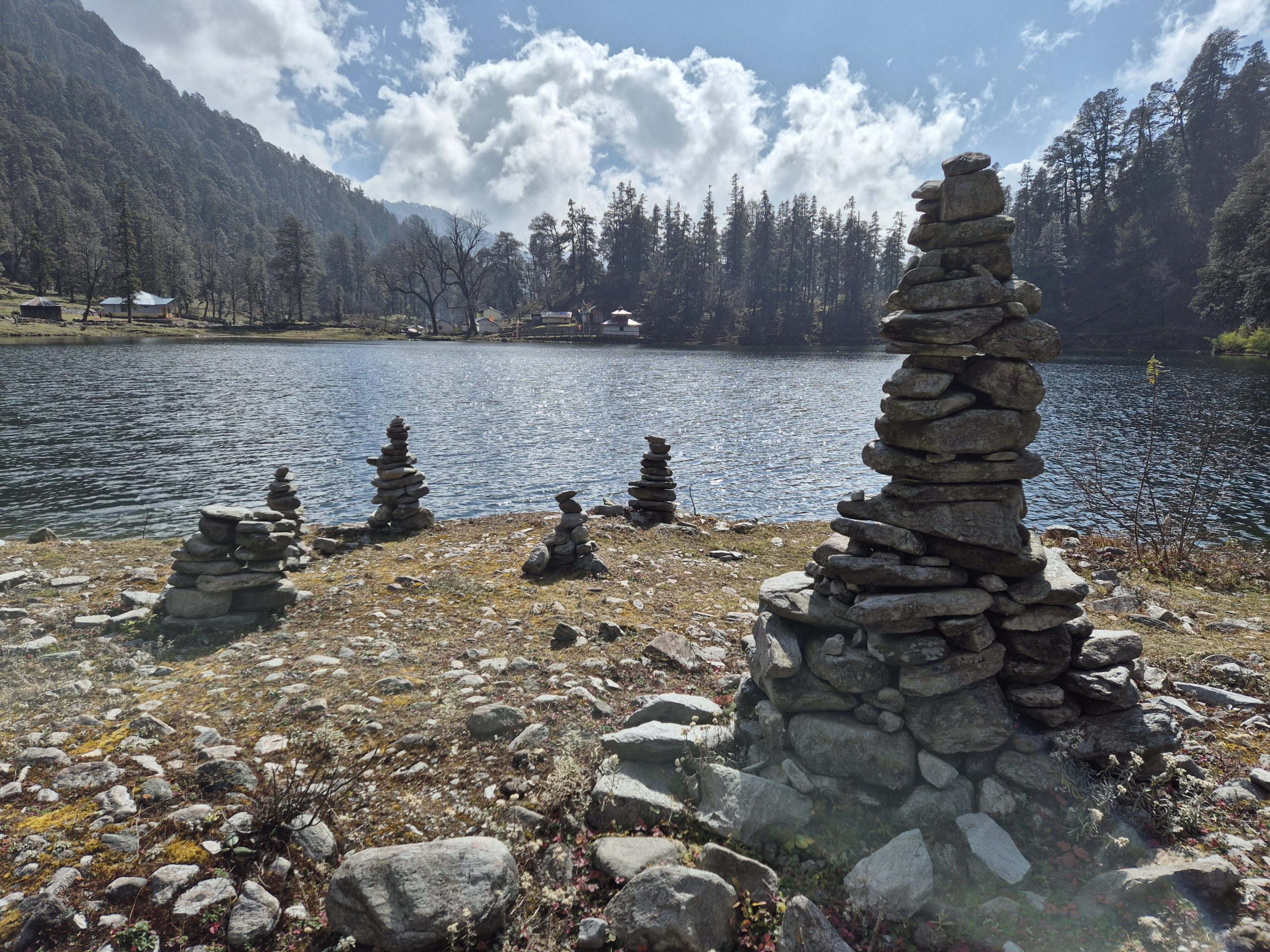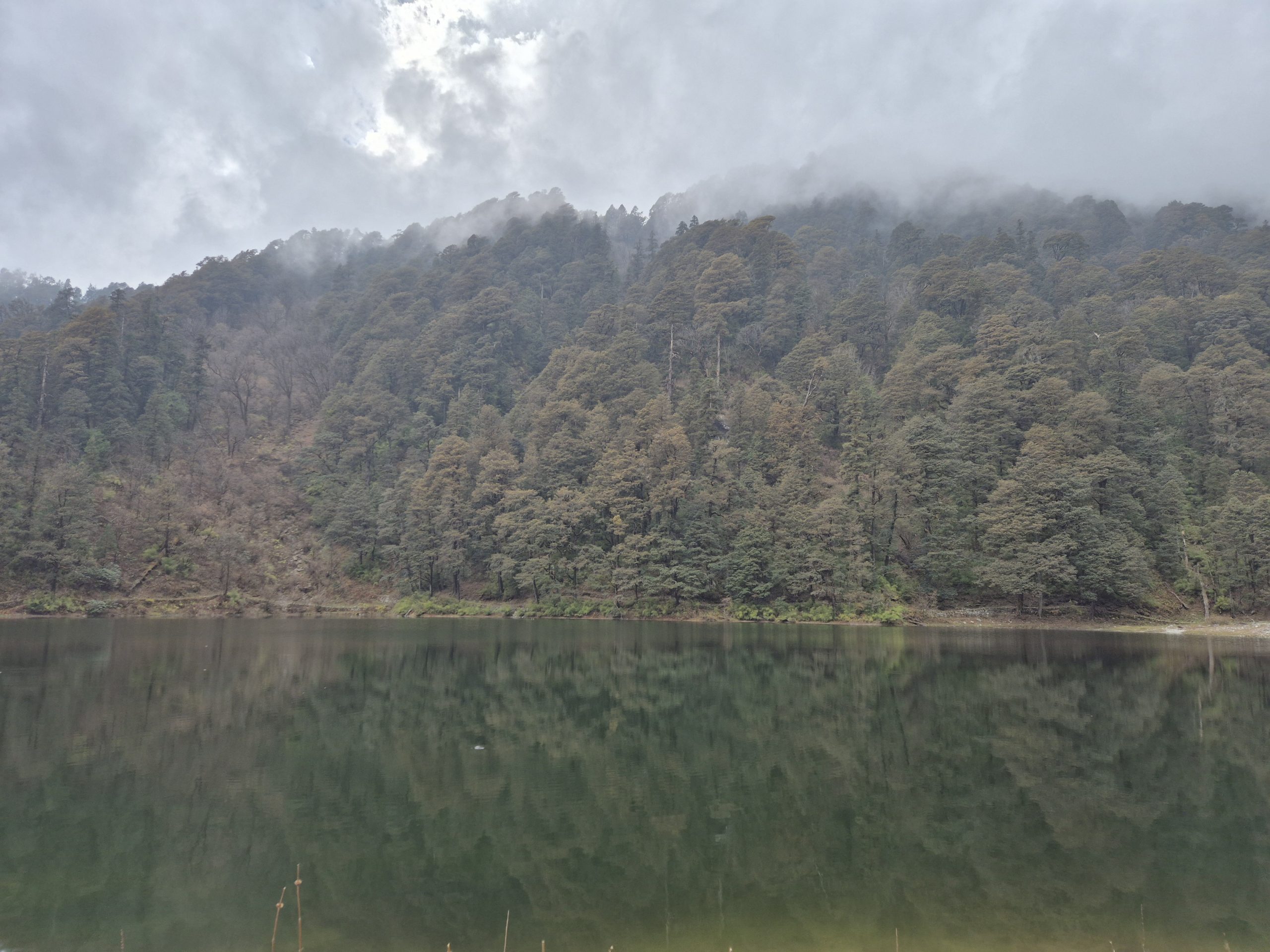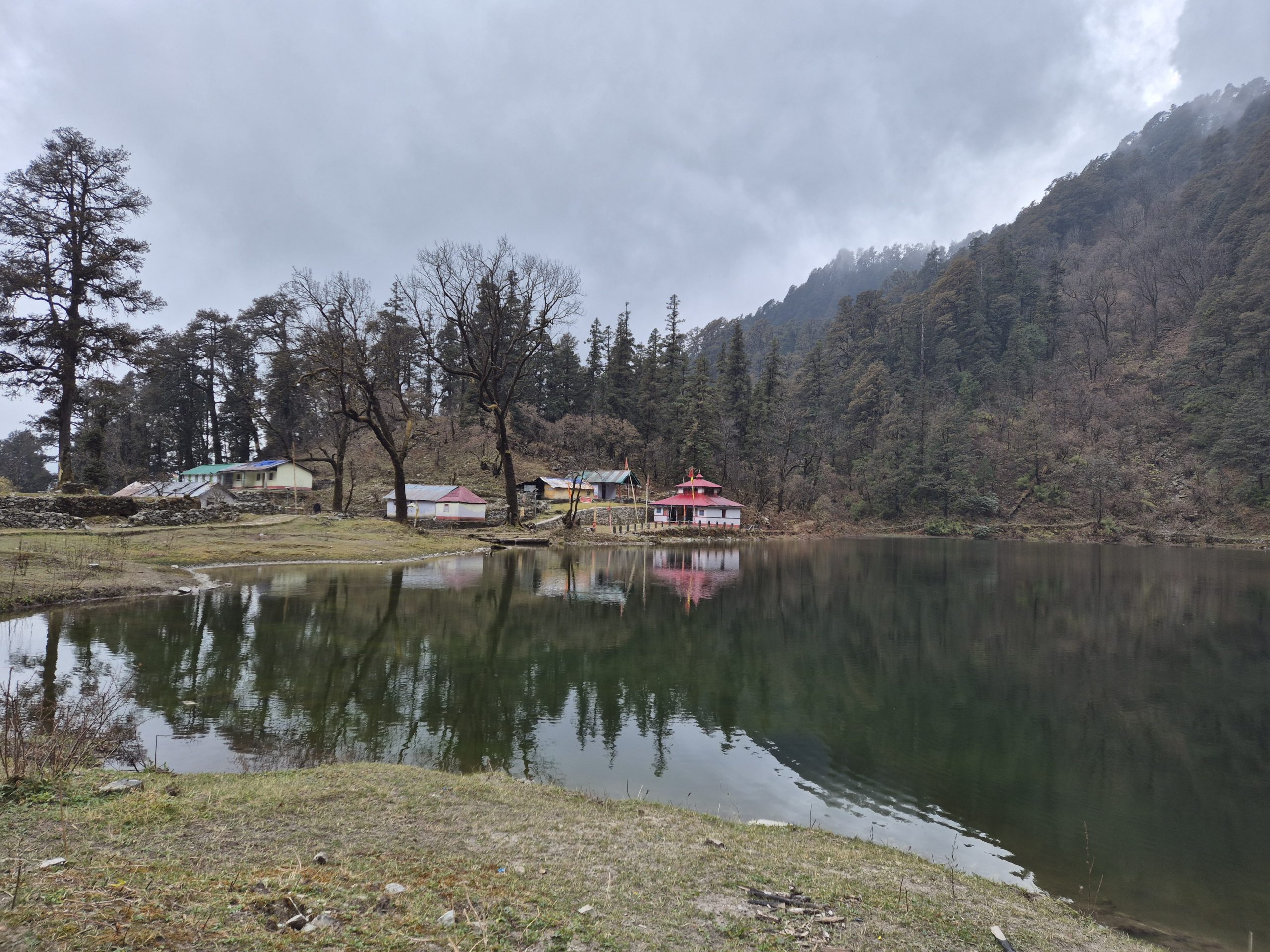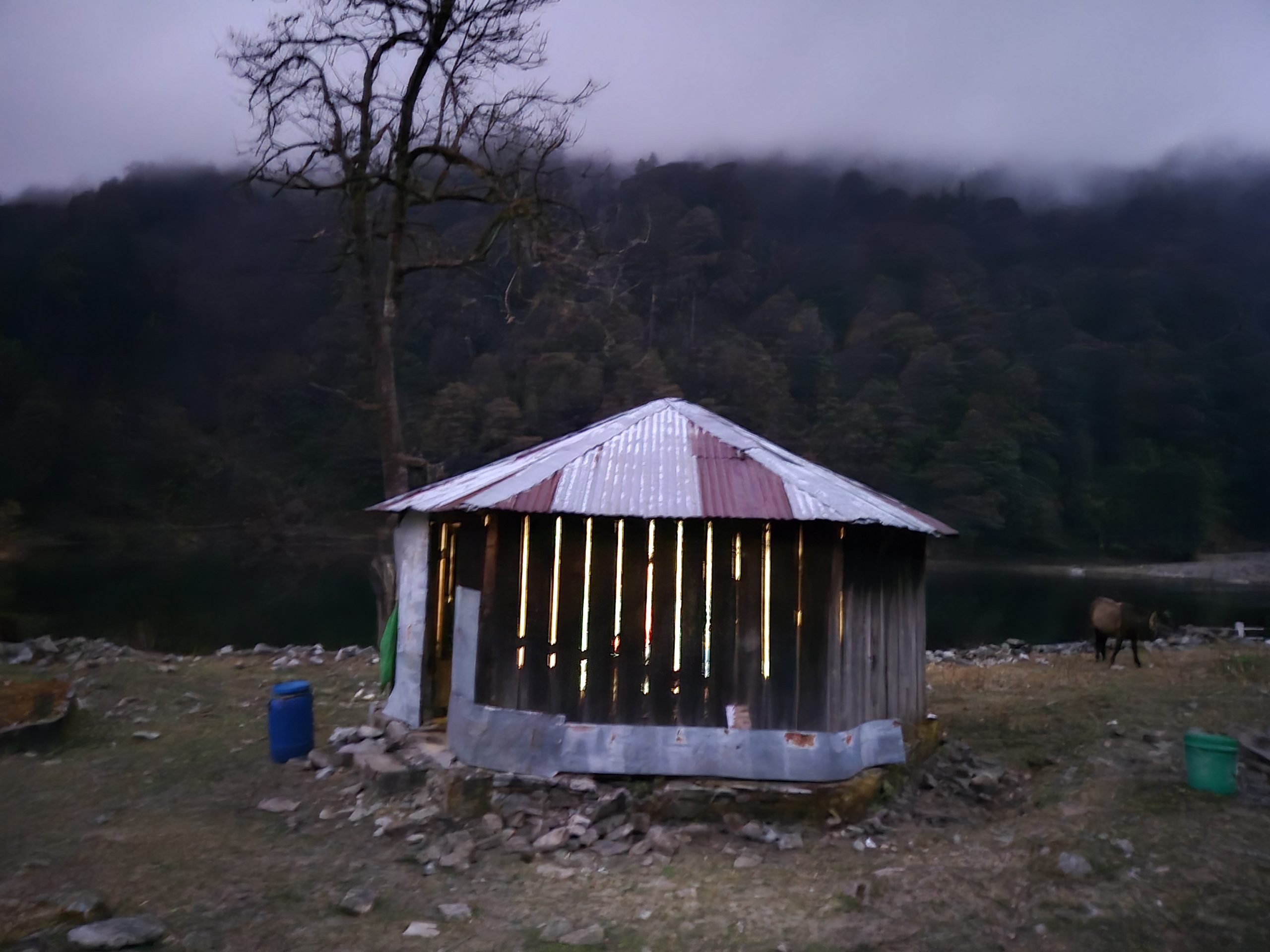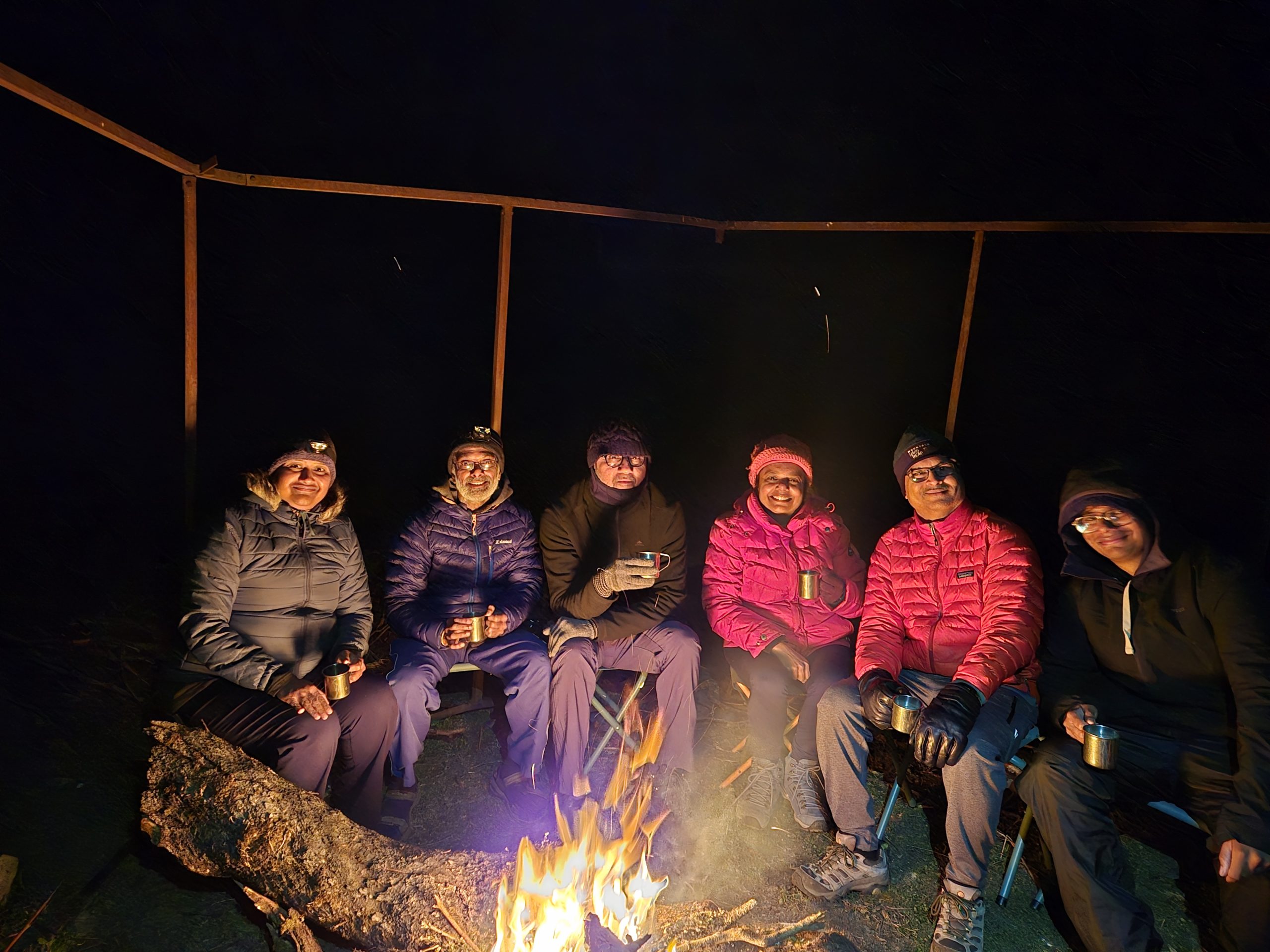Day 3: Manjhi – Dodi Tal (3050 m)
4 Nov 2025
An easy day with a small ascent and only 5 kms to walk. It was the most enjoyable day of the whole trek. I had enough bandwidth to notice and photograph tiny wild flowers. It wasn’t the flowering season, so only a few inconspicuous blooms were around – but there were plenty of lichens and impressive bracket fungi, those woody mushrooms growing on tree trunks. (Ash found an interesting blog post on “How to be like a lichen”, on adaptation strategies humans can learn from them.)
Reached a Bhairav temple near the end of the day’s walk, and after that the trail went alarmingly downhill. I came to Vinay and Ak, who were ahead of our guide and had stopped, wondering if we’d lost the path. Just then, a guide from another group walked past and assured us we were fine – as indeed we were, for we reached Dodital camp shortly after.
View my activity tracked on Garmin.
In Hindu mythology, Dodital is said to be Ganesha’s birth place. Appropriately, a temple stands at the edge of the lake – closed and barricaded now, but adding color and character to the view. It features in many of my photos from that day.
A brilliant sunny afternoon. The camp site was lovely: A deep green circular lake ringed by tall brown and green mountains. Fish frequently broke surface – Himalayan trout, we were told. Some of us sat at the edge, taking it all in.
A bird in the distance sparked an animated debate: was it a cormorant? heron? stork? Binocs were fetched, and still there wasn’t consensus. I’m convinced it was a cormorant – the beak curved down at the tip, even if it wasn’t striking that classic wings-out pose. Modest bird.
Later we walked around the lake’s perimeter. On the far side lay a stony valley filled with man-made cairns – piles of rock built with hope and prayer. After lazing on comfortable stone perches, we each made our way back. Ak gave me a photography assignment: capture him from the opposite edge – the result was not as dramatic as we imagined. He is a tiny black speck among the white rocks and mountains.
Next, we flopped outside a small tea shack and ordered multiple rounds of sweet masala chai. Still sunny, not a cloud in sight. Eventually we ambled over to our tents where our support crew had cooked a simple but delicious lunch of rotis, sabji, dal and rice.
I couldn’t nap, so I joined Vinay and Ram on the verandah of a locked Forest Officer’s Bungalow. What a pity – a perfectly usable building, yet inaccessible even for a small fee. Especially for the toilet. Instead, we had to make do with a tent over a dug-out pit.
A rusty sign nailed to a nearby tree declared: “Flush toilets are not allowed here.” As if trekkers were carrying flush systems in their backpacks! “Ah, damn! Guess we’ll dig a hole then!”
By afternoon, clouds gathered menacingly. The sleepy calm beauty vanished. We had hoped for clear skies to enjoy the full moon that night – getting less likely by the minute. The others crawled out for evening tea, all bundled up against the nasty chill air of the late afternoon.
A campfire was set up, and we still hoped for a dry cozy campfire evening. Without preamble it began to hail. It would’ve been lovely looking out from a warm cabin window. We had tents. Soon the hail became rain, and the worst of it hit later that night.
Dinner was served inside a kitchen hut our crew had commandeered – another wholesome meal of roti, sabji, dal, and rice. Hats off to Himalayan camp cooks: under impossible conditions, they produce hearty meals for spoiled trekkers like us, day after day, trek after trek.
We lingered briefly by the fire – damp logs, but enough warmth for an hour or so before turning in early. Tomorrow was the big day: the ascent to Dharwa Pass (3,900 m) and Dharwa Top (4,100 m).


